On September 13th, I was invited to attend Ziyoujia NV’s second static experience event. The official announcement stated that the displayed car had made certain modifications based on feedback from many users.
So, how does the car perform in terms of static performance? And what exactly does “Ziyoujia” represent? Let’s take a further look at their first new car, Ziyoujia NV, and the thinking behind the Ziyoujia brand.
Brand and vehicle introduction: For the city and the outdoors
Firstly, Ziyoujia explained the meaning behind its brand name. The so-called “ziyou” does not mean the homophonic “freedom,” but rather means “drive comfortably and skillfully.” “Jia” does not refer to family, but has the same meaning as “home” for musicians and painters. “Ziyoujia” is a new term created by Ziyoujia to refer to a certain group of people.
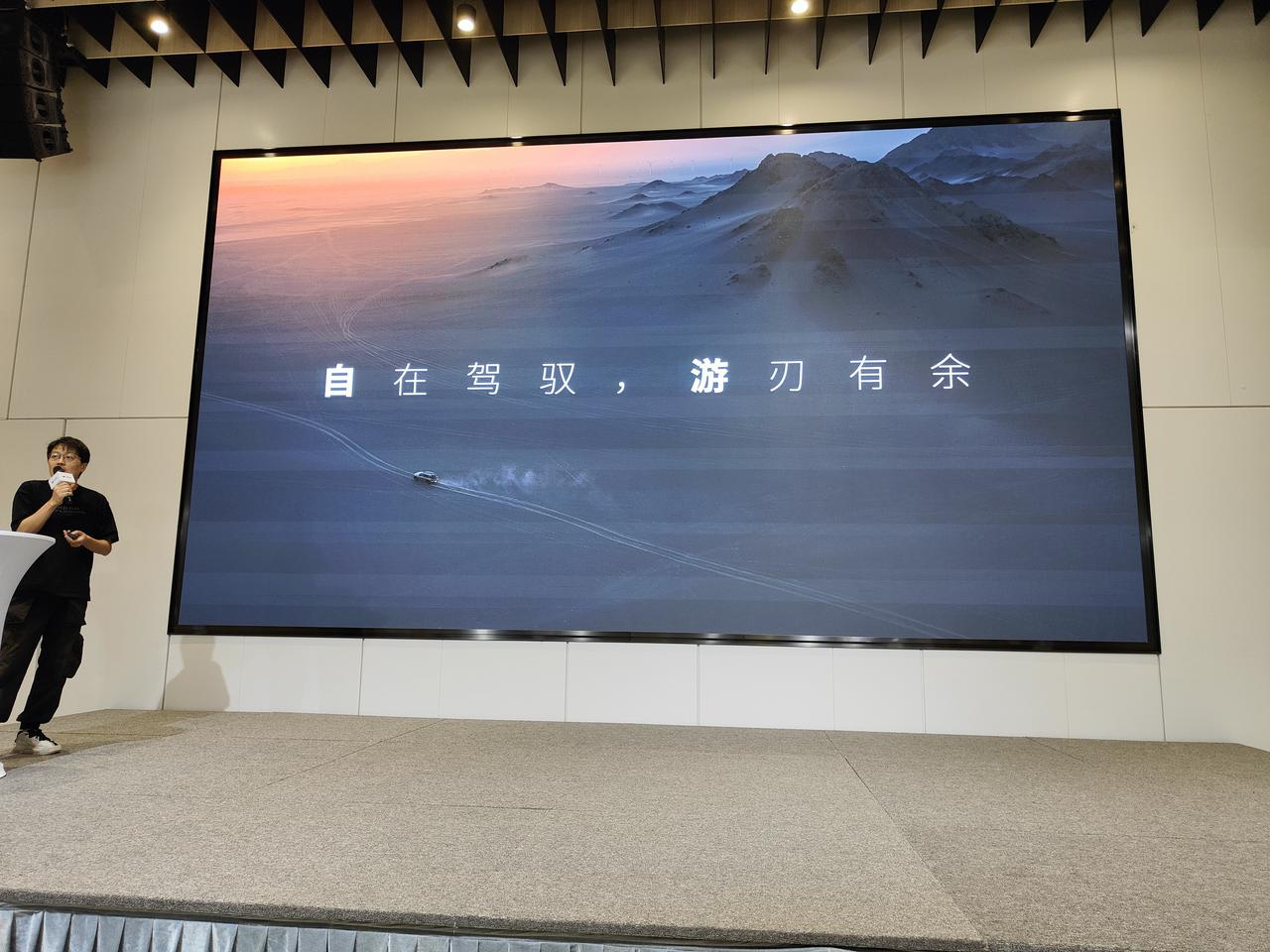
Based on the design concept of “city exploration,” Ziyoujia NV hopes to create a new energy SUV that can meet the needs of daily commuting and also has an outdoor exploration temperament.
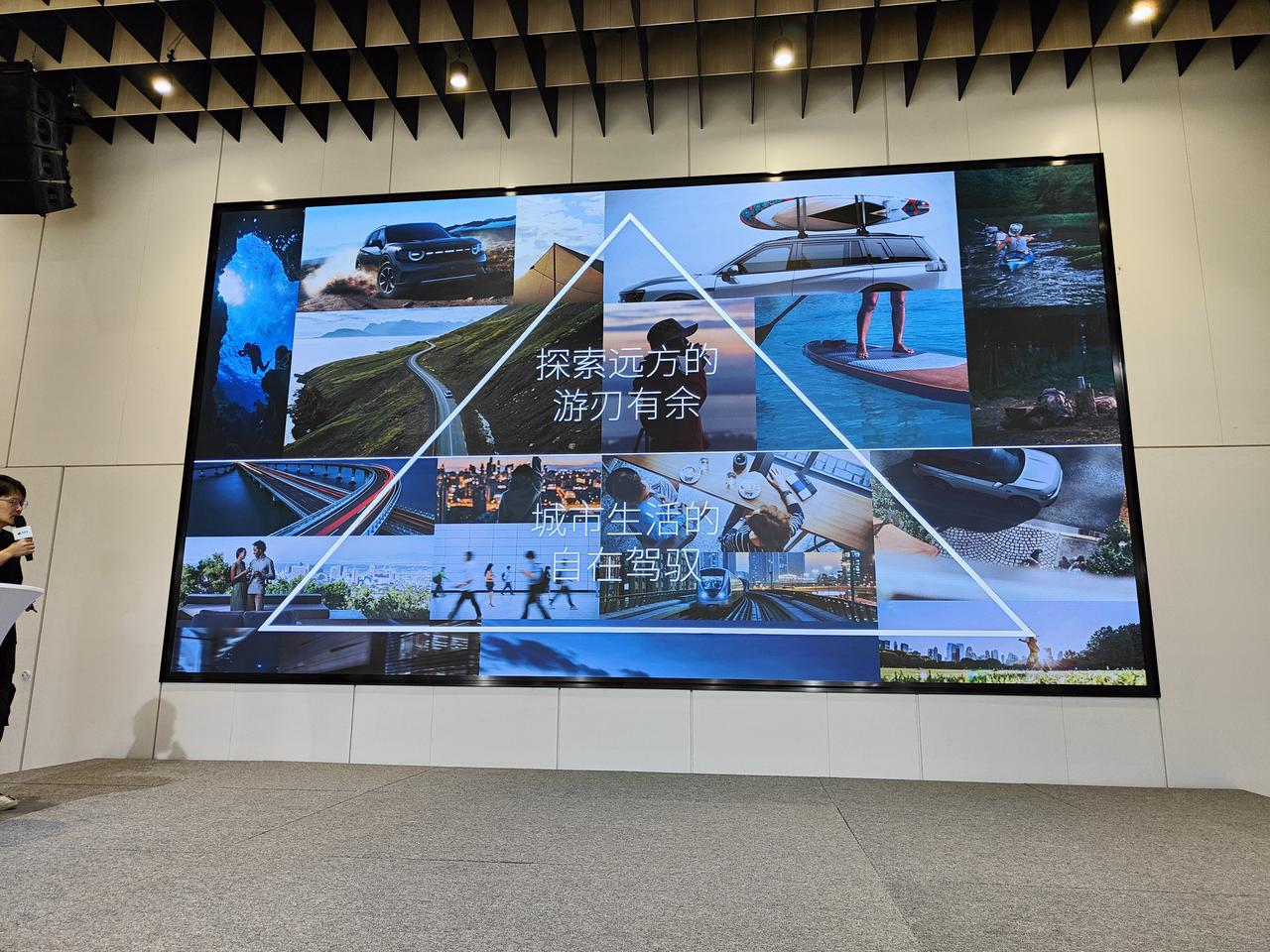
Ziyoujia then gave a simple introduction to its first new car, NV, which uses the GEMINI twin platform and is compatible with both range-extending and pure electric modes.
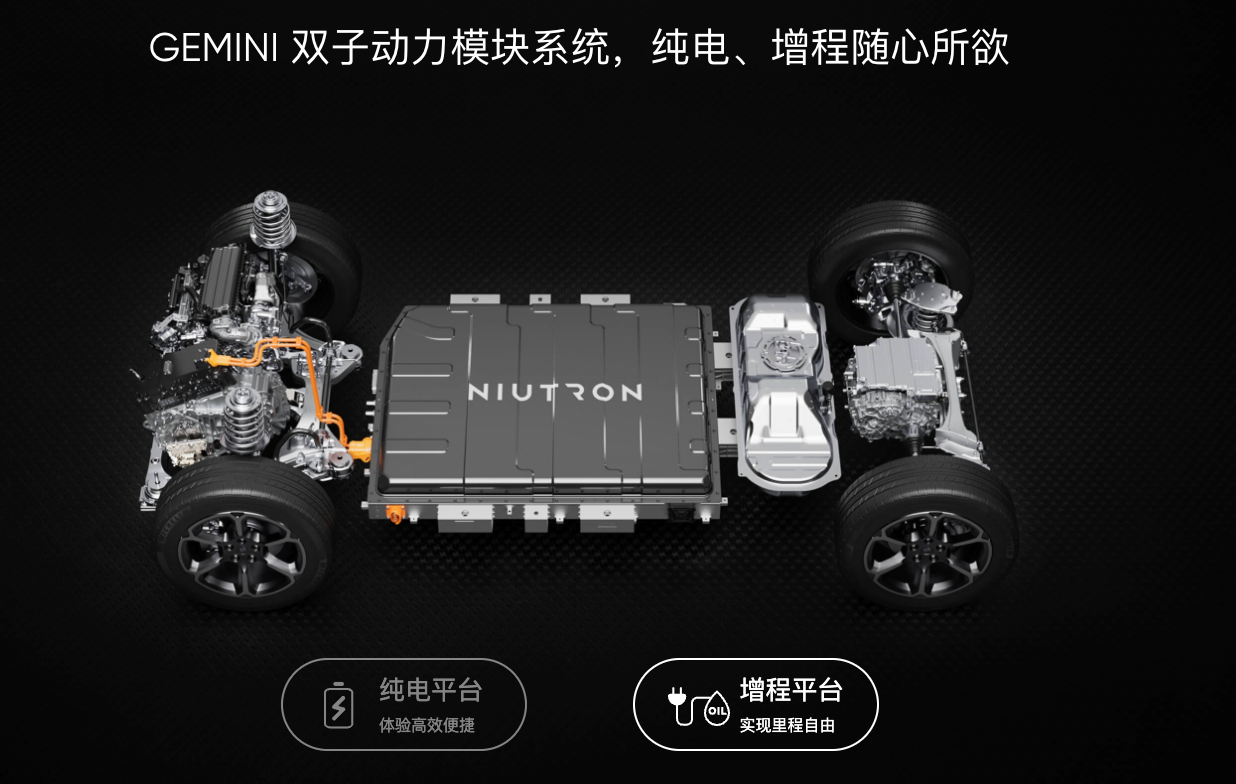
The range-extending version uses a 1.5T four-cylinder range-extender with a fuel and electric hybrid drive, achieving a comprehensive fuel consumption of 6.8L per 100km and a maximum CLTC range of 1,257km on full battery and fuel.
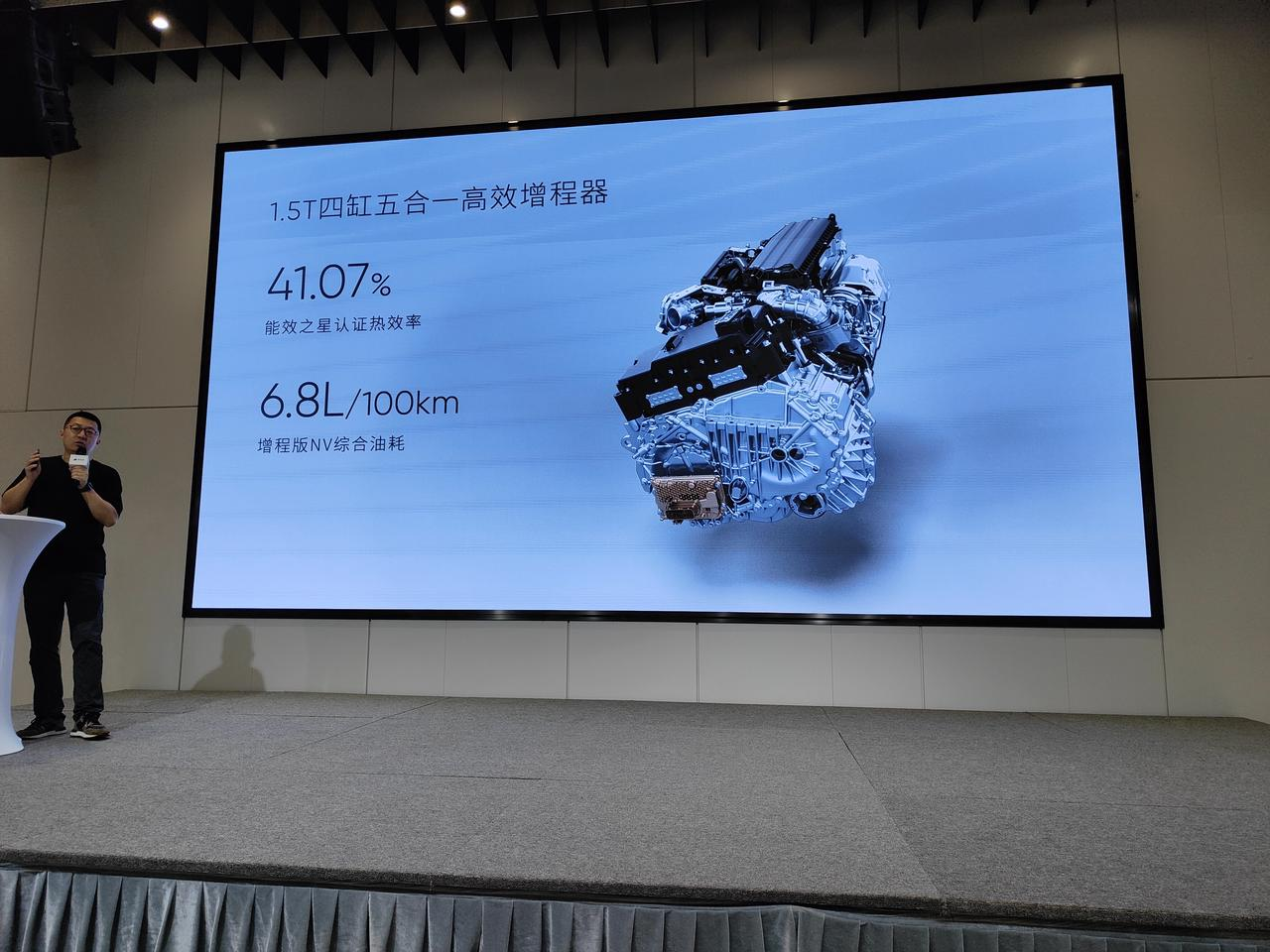
A key point is that this range-extender can take regular gasoline (92 octane) and can save a lot of money during times of high gasoline prices. Additionally, the official announcement mentioned that many gas stations in places like Xinjiang and Tibet may only have 92 octane gasoline.
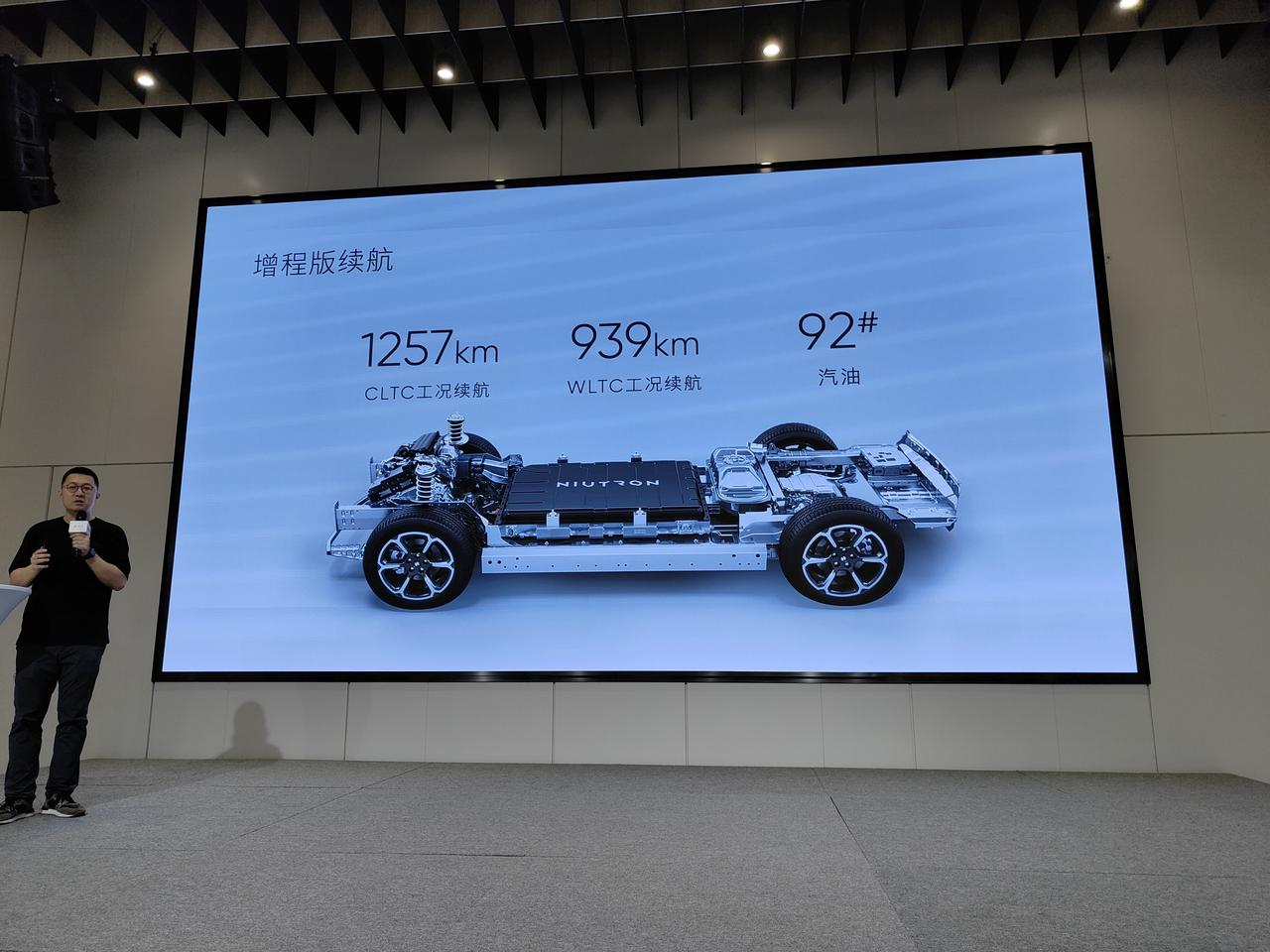 The standard range version of CLTC has a range of 440 km, while the long range version has a range of 560 km.
The standard range version of CLTC has a range of 440 km, while the long range version has a range of 560 km.
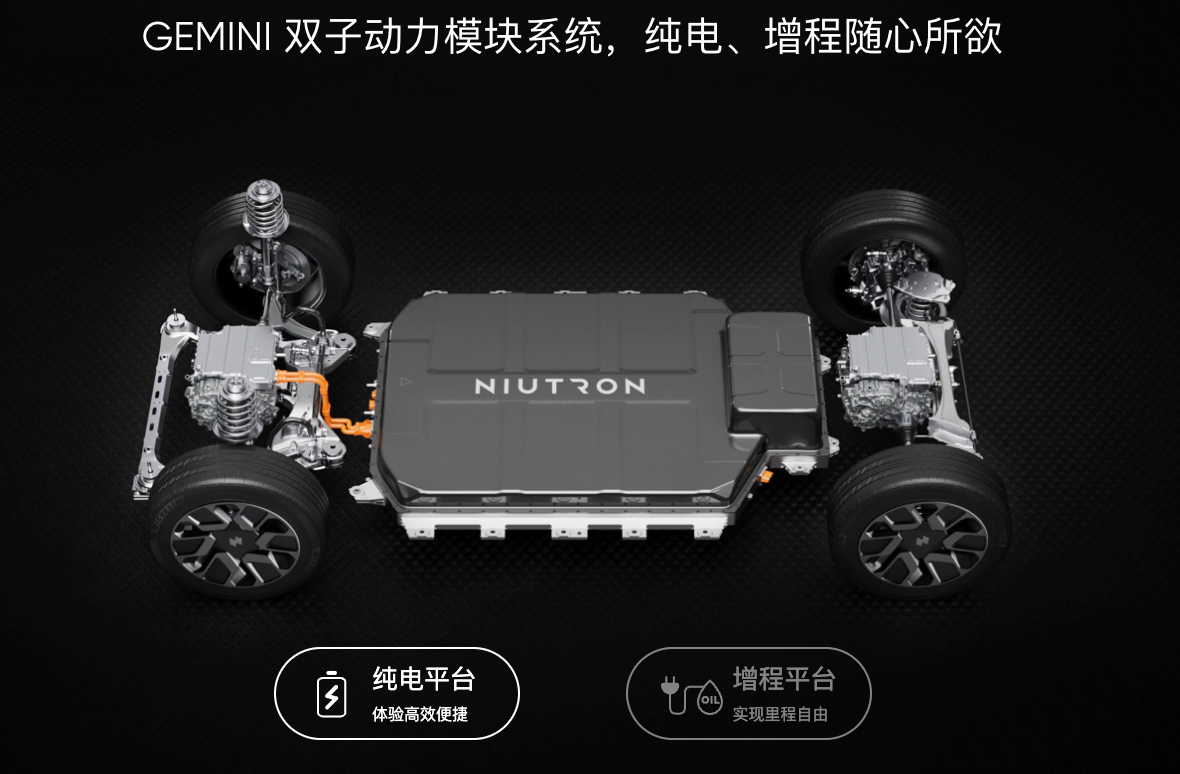

With a 50:50 weight distribution between front and rear axles, a minimum ground clearance of 200 mm, a tire outer diameter of 788 mm, a wading depth of 470 mm, and an off-road driving mode, the Ziyoujia NV is capable of handling mild off-road conditions with ease.
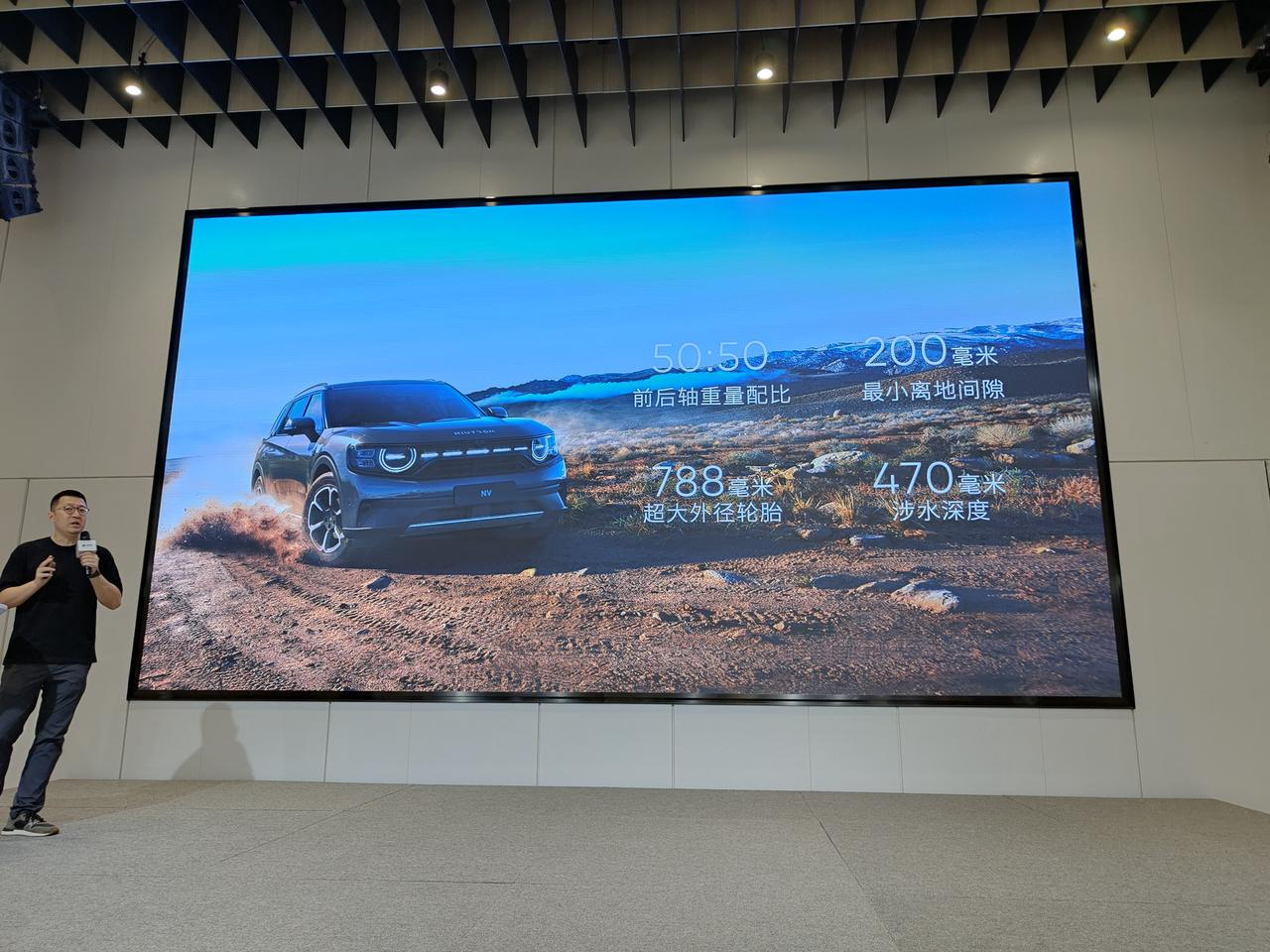
The Ziyoujia NV has a trunk capacity of 788 L, which can be expanded to 1,730 L by folding down the rear seats. The electric vehicle model also provides a front trunk with a capacity of 80 L. In addition, with a 3.3 kW external power output function, the owner can bring enough equipment to go camping with friends and family while also being able to emergency charge other vehicles at 6 kW.
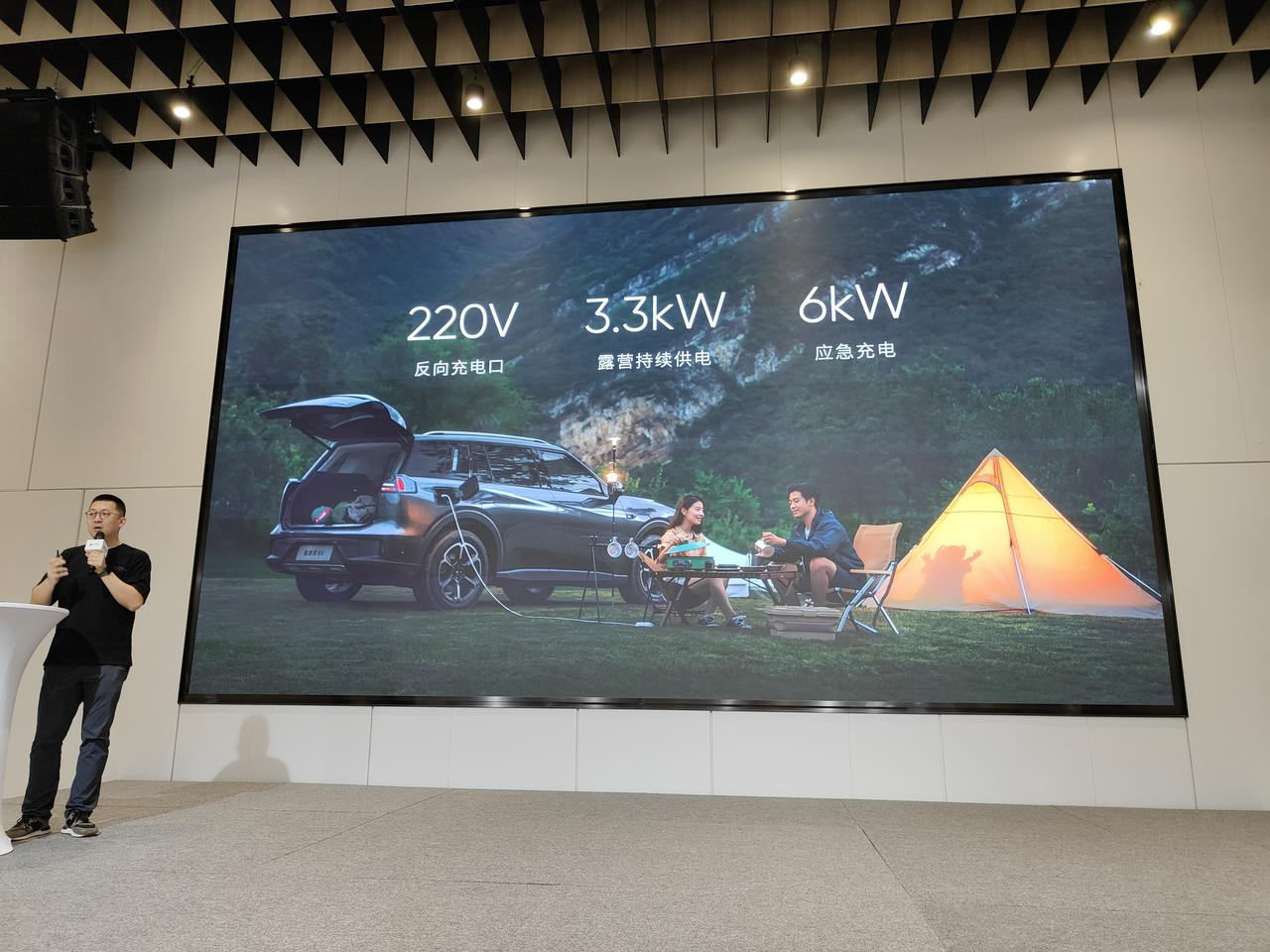
In terms of intelligent driving, the Ziyoujia NV series comes standard with AAD Basic L2 assisted driving. In addition, the entire vehicle supports hardware upgrades to SuperDrive AAD, which will support high-speed and city navigation functions.

The hardware specifications of the post-upgrade SuperDrive AAD are as follows:
- 2 Horizon Journey® 5 chips with a total computing power of 256 TOPS
- 12 ADAS cameras, including 2 front-facing high-definition cameras with 8 million pixels, 4 surround cameras, 4 side-view cameras, 1 rear-view camera, and 1 DMS camera
- 5 millimeter-wave radar
- 12 ultrasonic radars
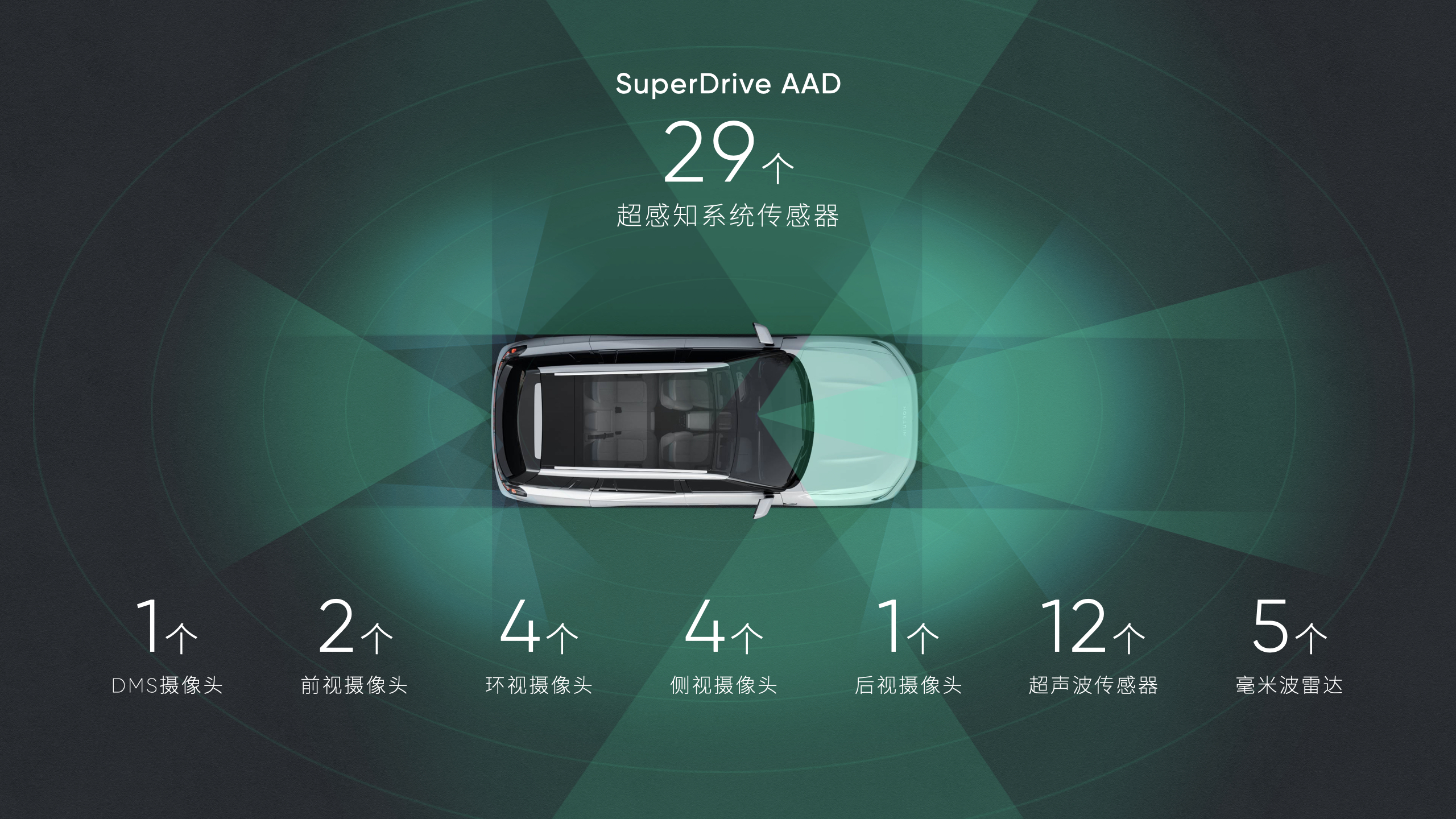 Regarding the replenishment capability, the official stated that they have collaborated with 38 top manufacturers and connected 400,000 public charging piles. In the future, Zhiyoujia plans to open 120 stores in 40 cities.
Regarding the replenishment capability, the official stated that they have collaborated with 38 top manufacturers and connected 400,000 public charging piles. In the future, Zhiyoujia plans to open 120 stores in 40 cities.
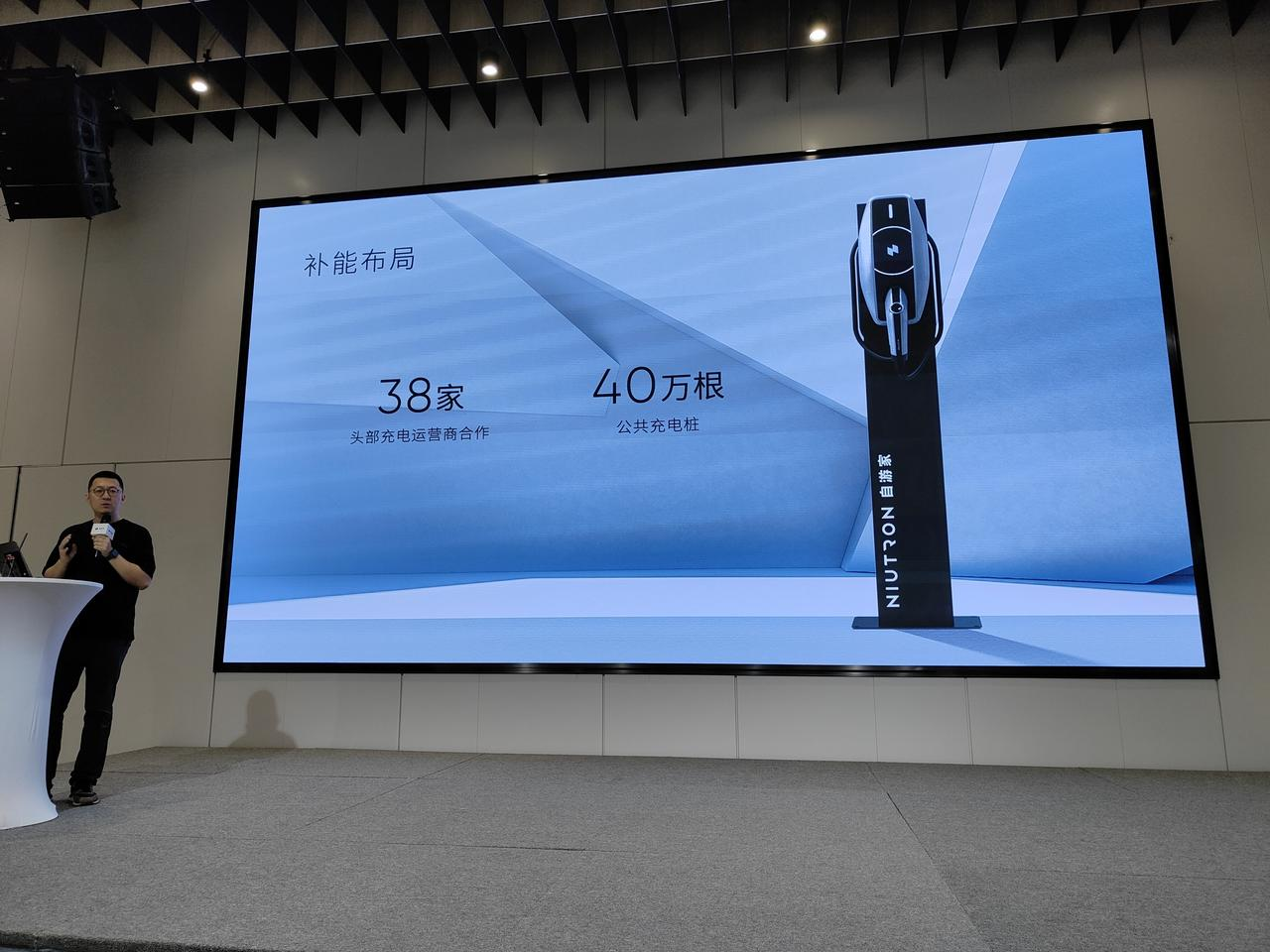
Here’s a summary of the selling points of the entire vehicle. Let’s now take a look at the actual car.
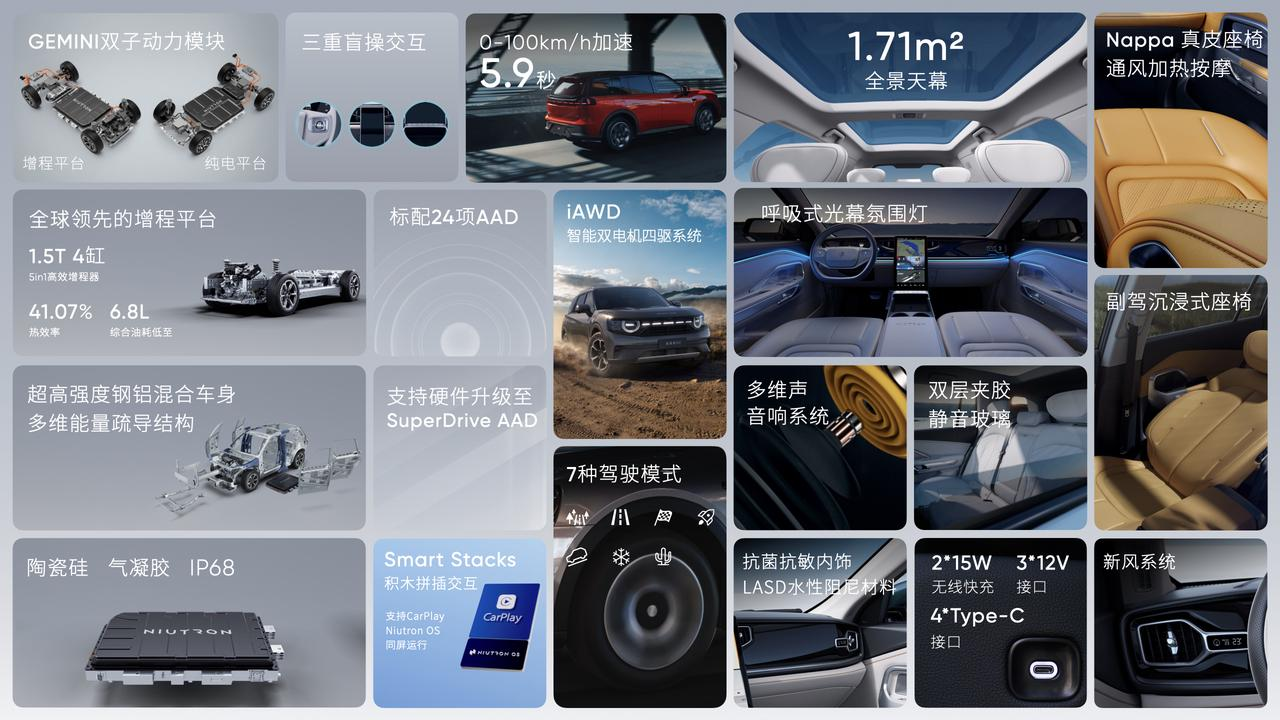
How is the appearance? Resembling a Land Rover
Zhiyoujia NV’s appearance is not a secret anymore, and many people have even seen and experienced it in person at offline exhibitions. However, considering that many people still haven’t seen it in person, I will briefly introduce it.
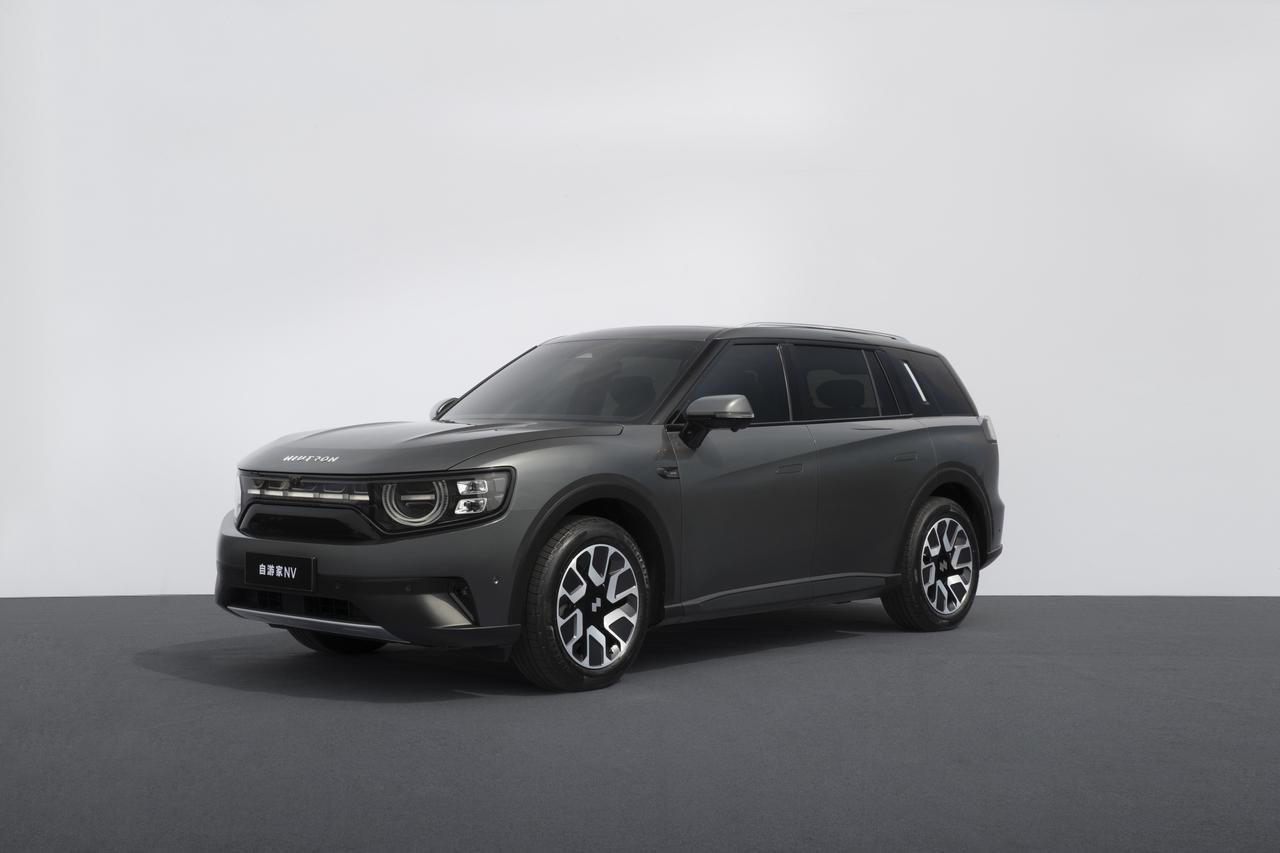
What brand comes to mind when you first see this car? I think of the Land Rover Defender.

Zhiyoujia NV employs a distinctive through-type daytime running light. The left and right “bull’s-eye” lights are connected by a dashed line in the middle, and the momentum is no less impressive than the headlights of a Land Rover.

The exterior of the headlights is not for front fog lamps, but for high and low beam lights with adjustable height. The front fog lamps are located at the lower section of the bumper.
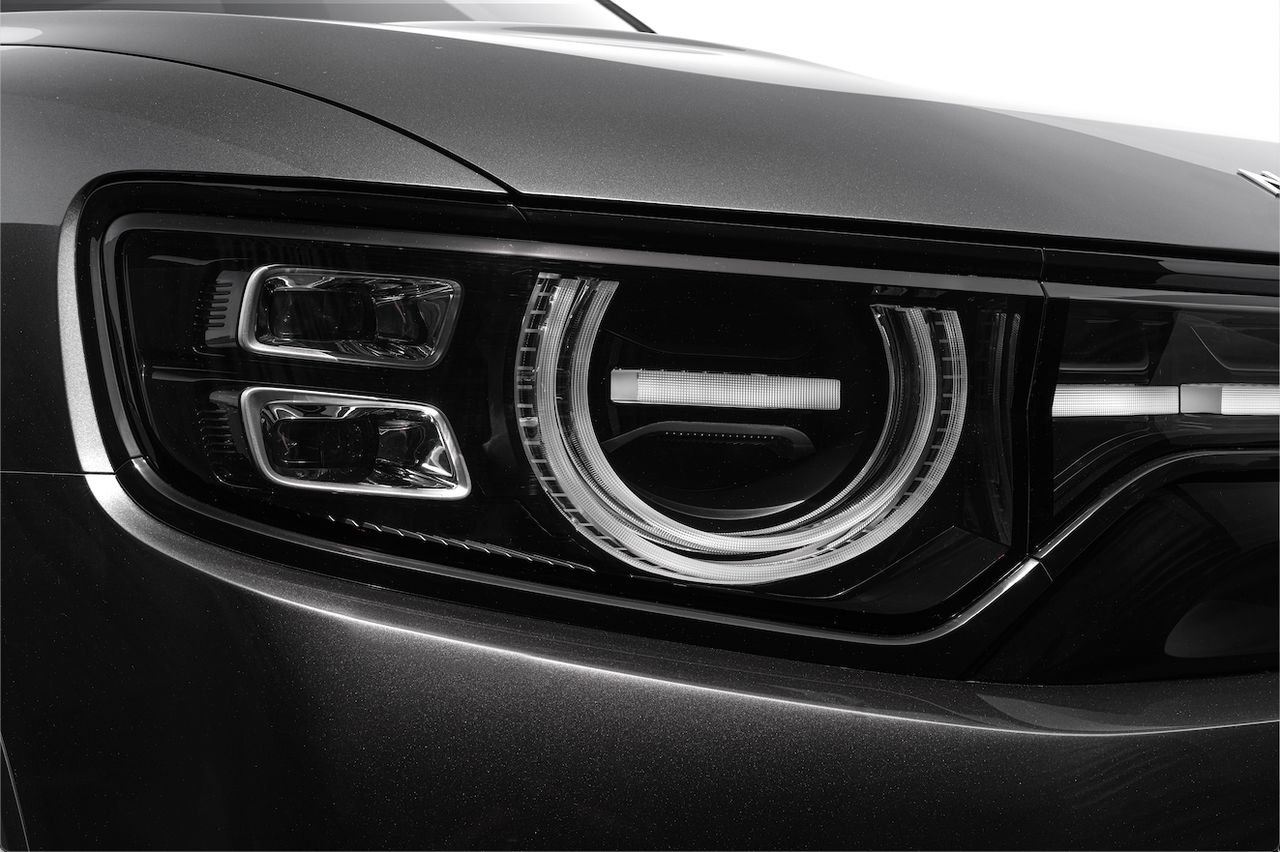
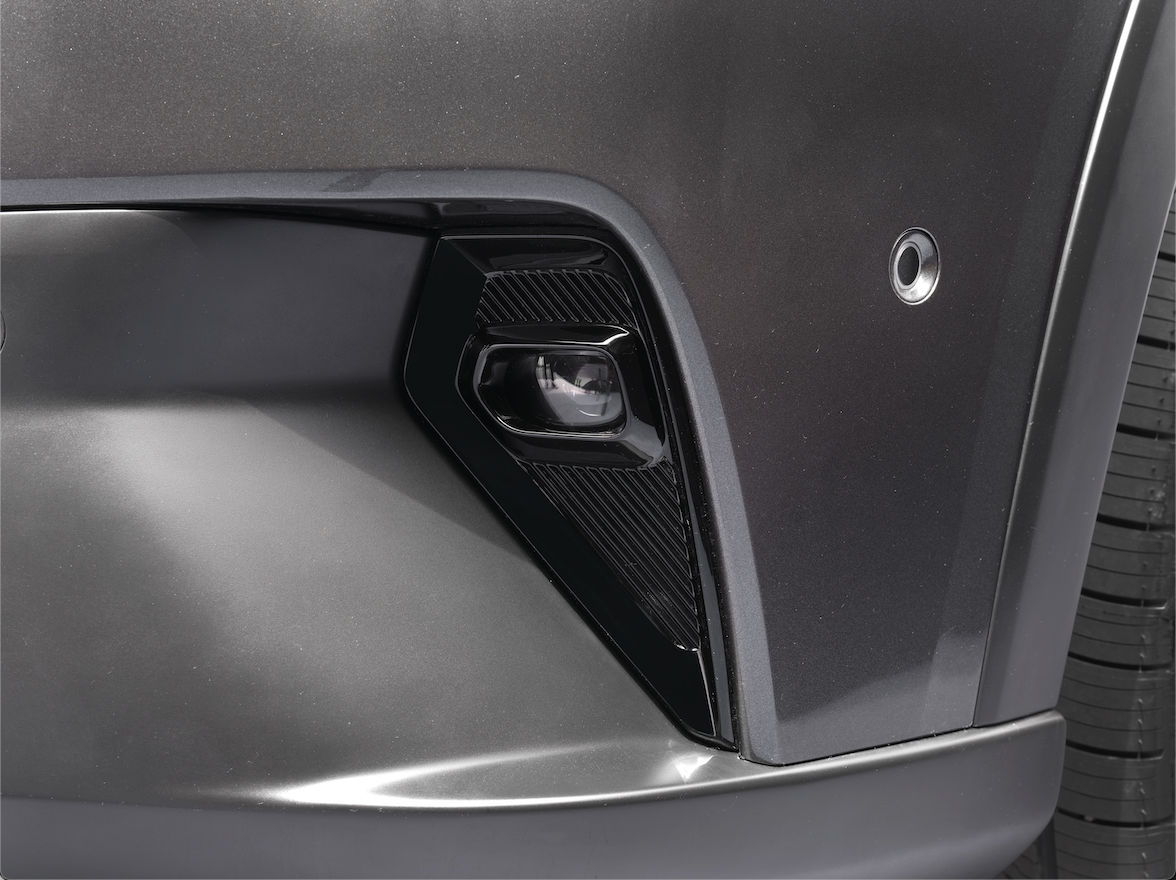
The front-view camera is located in the center above the daytime running light. One does not have to worry about rainwater or mud dirtying the camera at this position.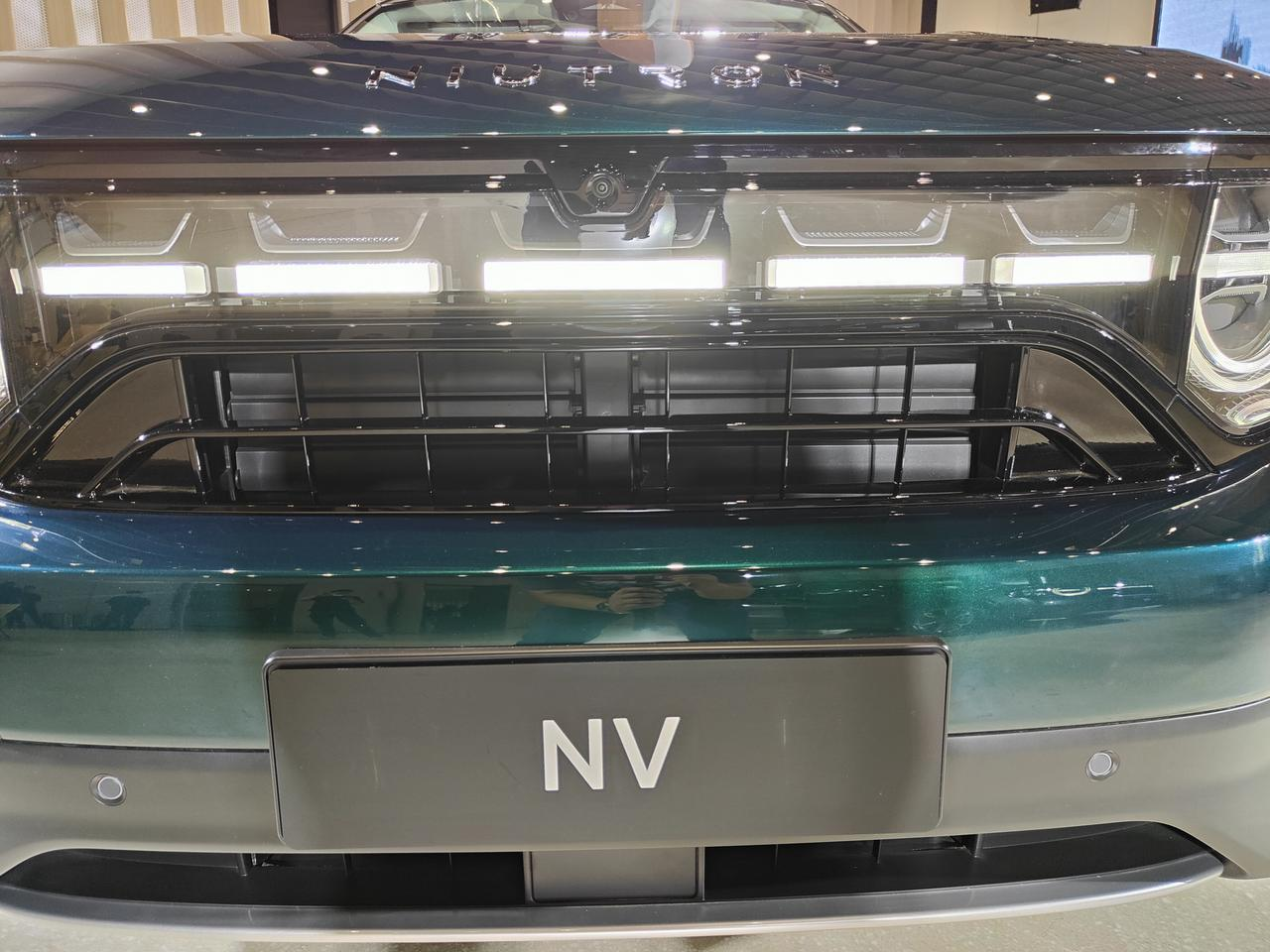
For the pure electric version, you can open the front hood to see the 80 L front trunk. Unfortunately, the two display cars on site were extended range version, so I didn’t have the chance to see the size of the front trunk. Below are the official photos of the front trunk.
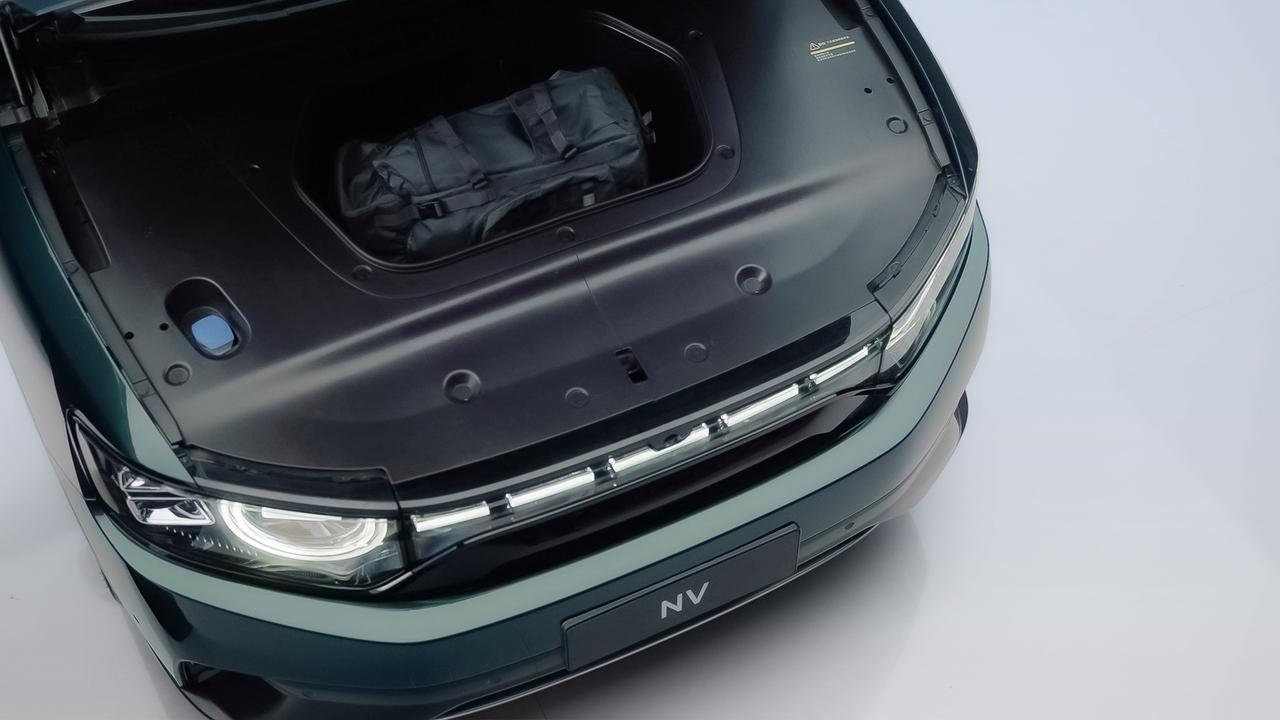
The display cars currently use a forward perception scheme with a single camera. After the hardware is upgraded, it will be upgraded to a scheme with 2 front view binocular cameras, each with 8 million pixels.
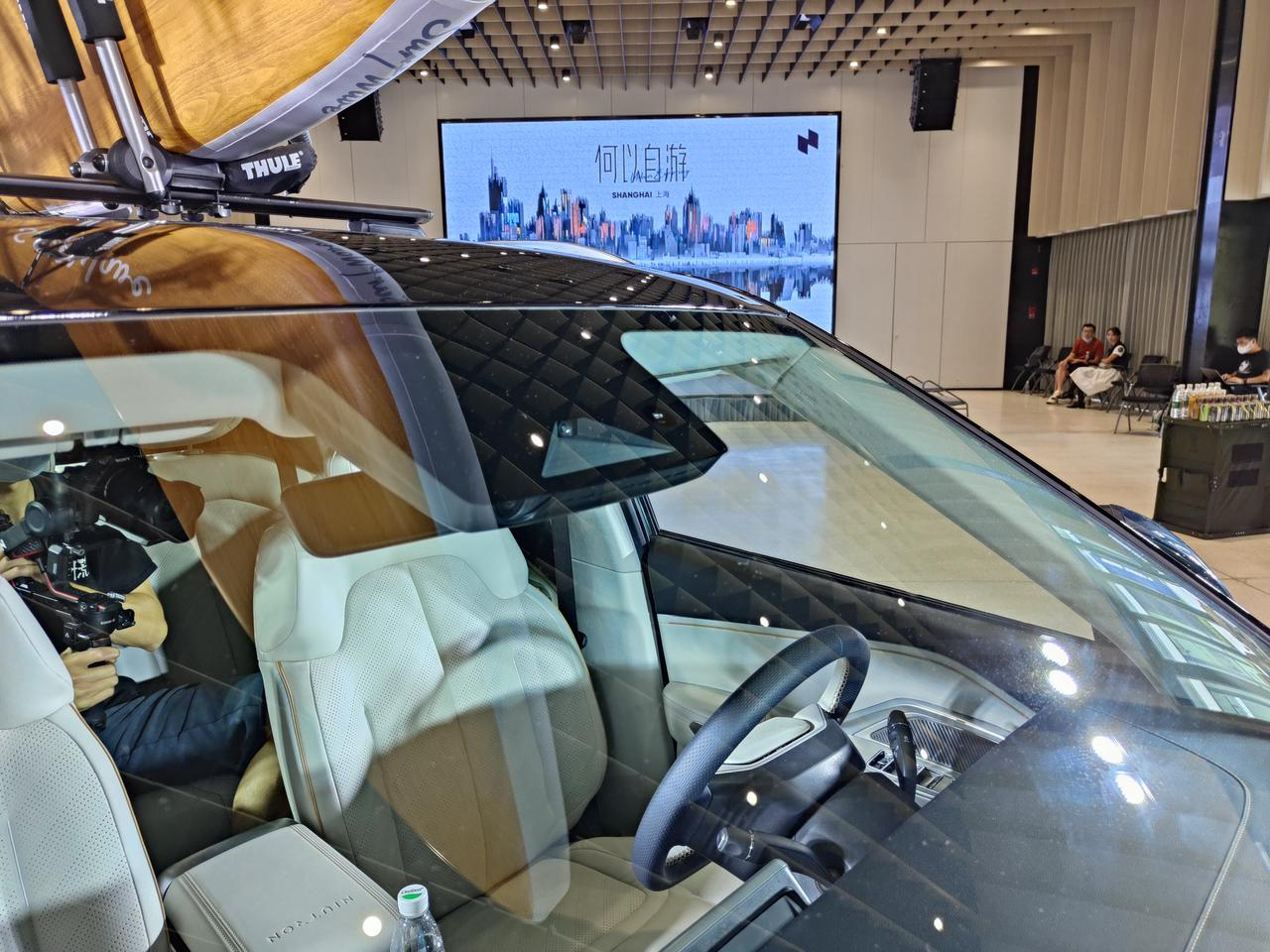
Above the rearview mirror and front wheel fender, you can see the camera installation position reserved for the driving hardware upgrade.
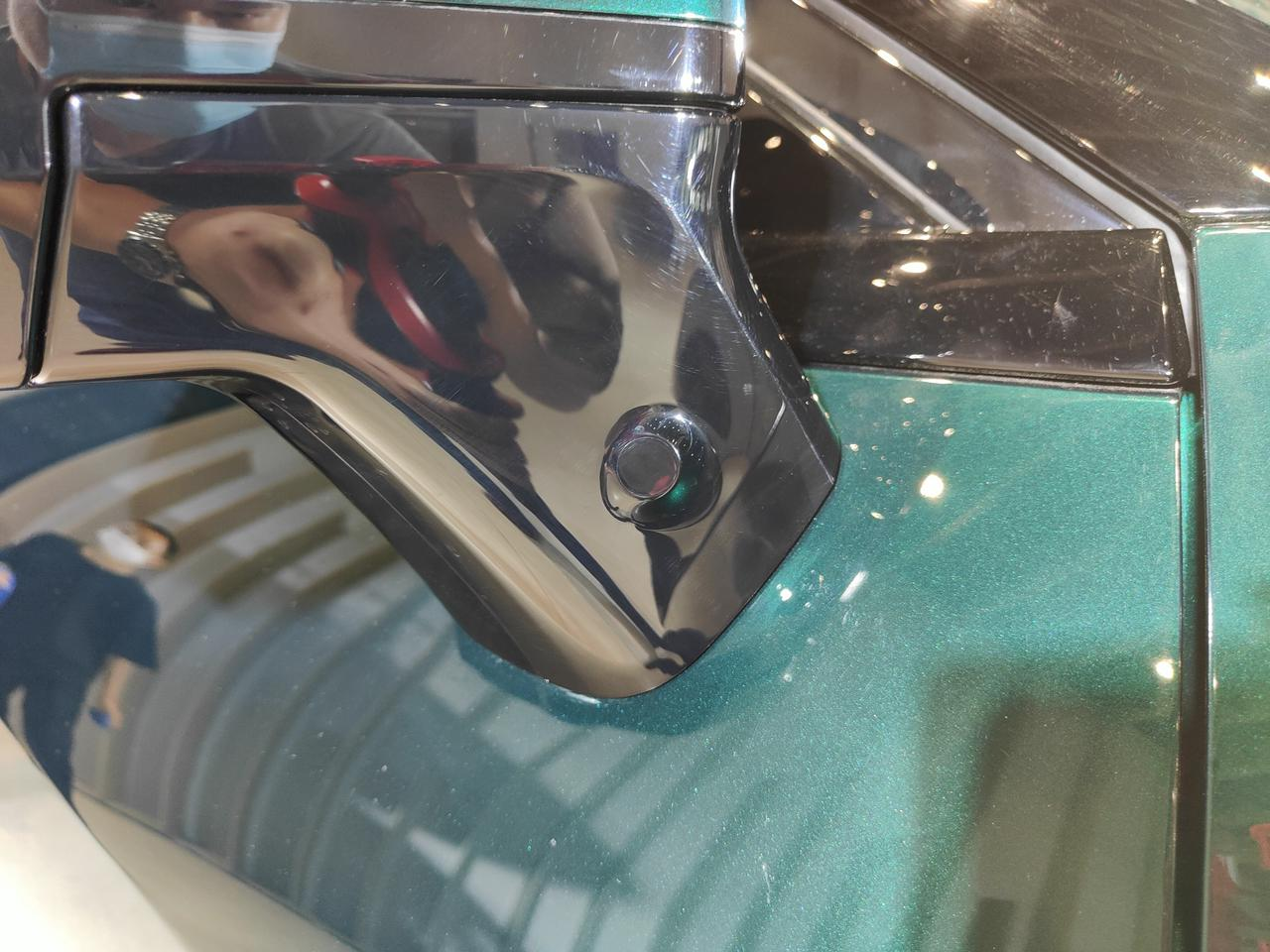
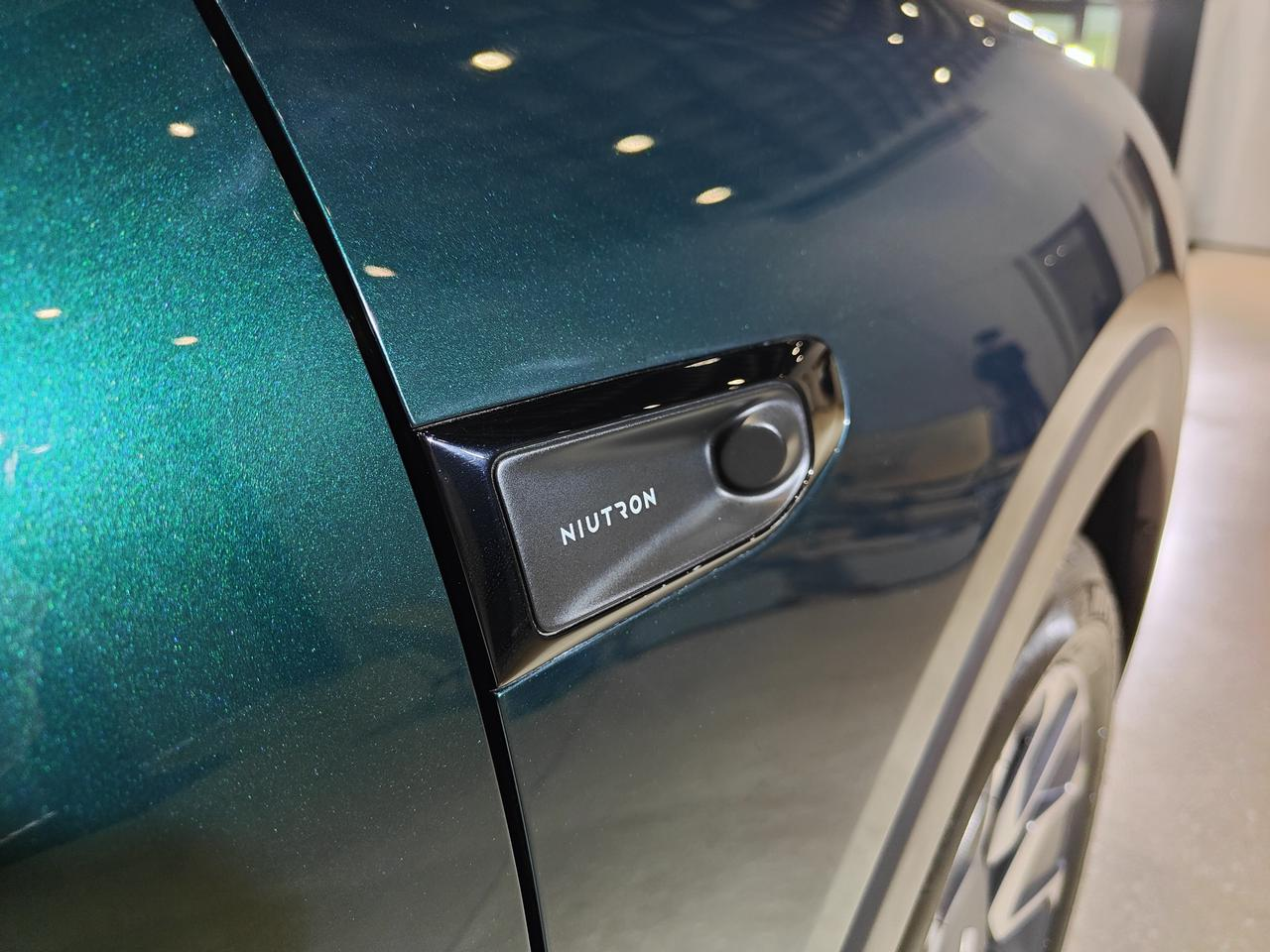
The display cars use 265/55 R20 Michelin PRIMACY SUV tires. I think this low-drag hub design is very beautiful. If you don’t like it, you can also choose a sport wheel.
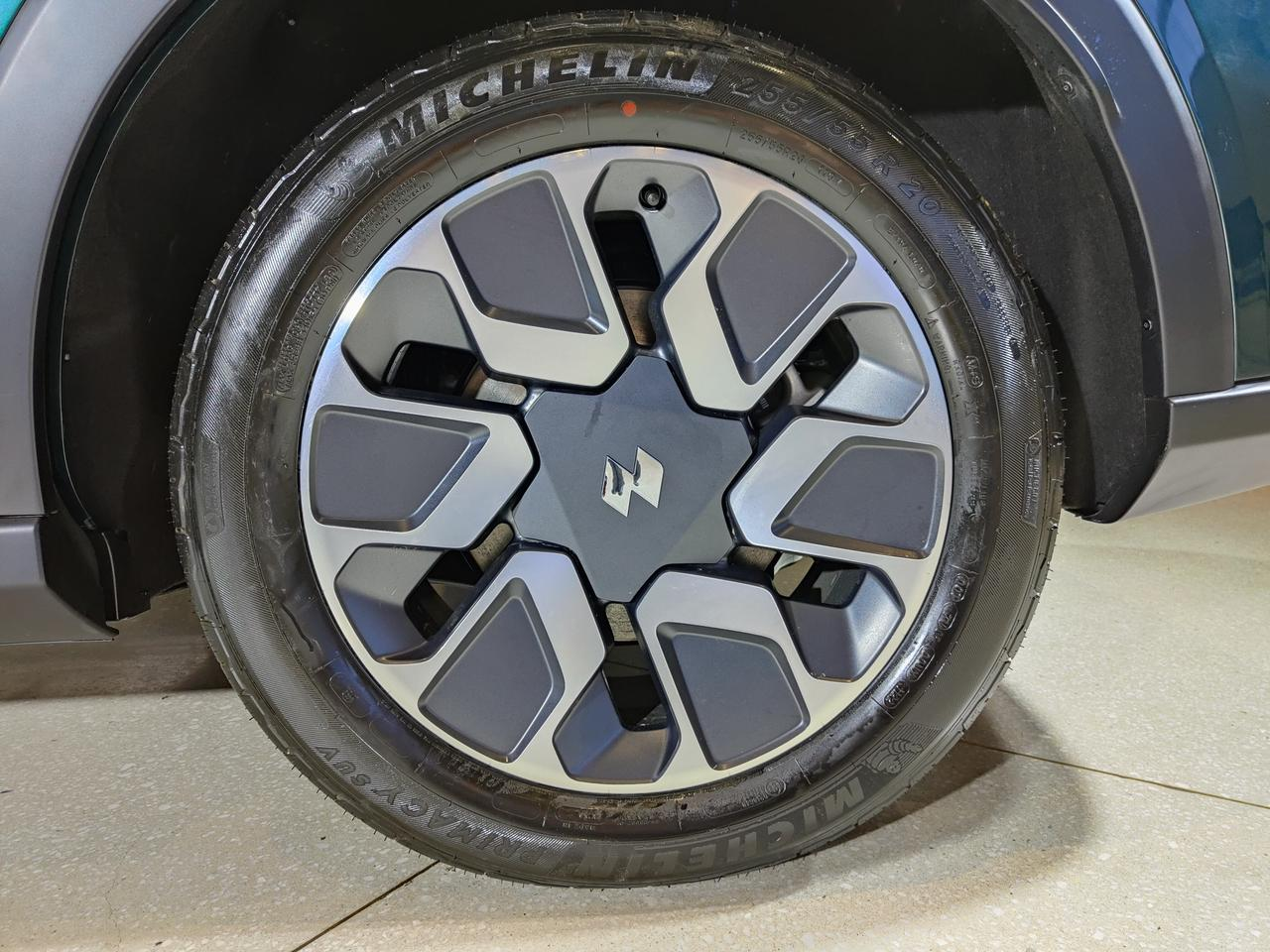
The door handle uses the common pop-up hidden door handle, which is easy for ordinary users to understand and get used to.
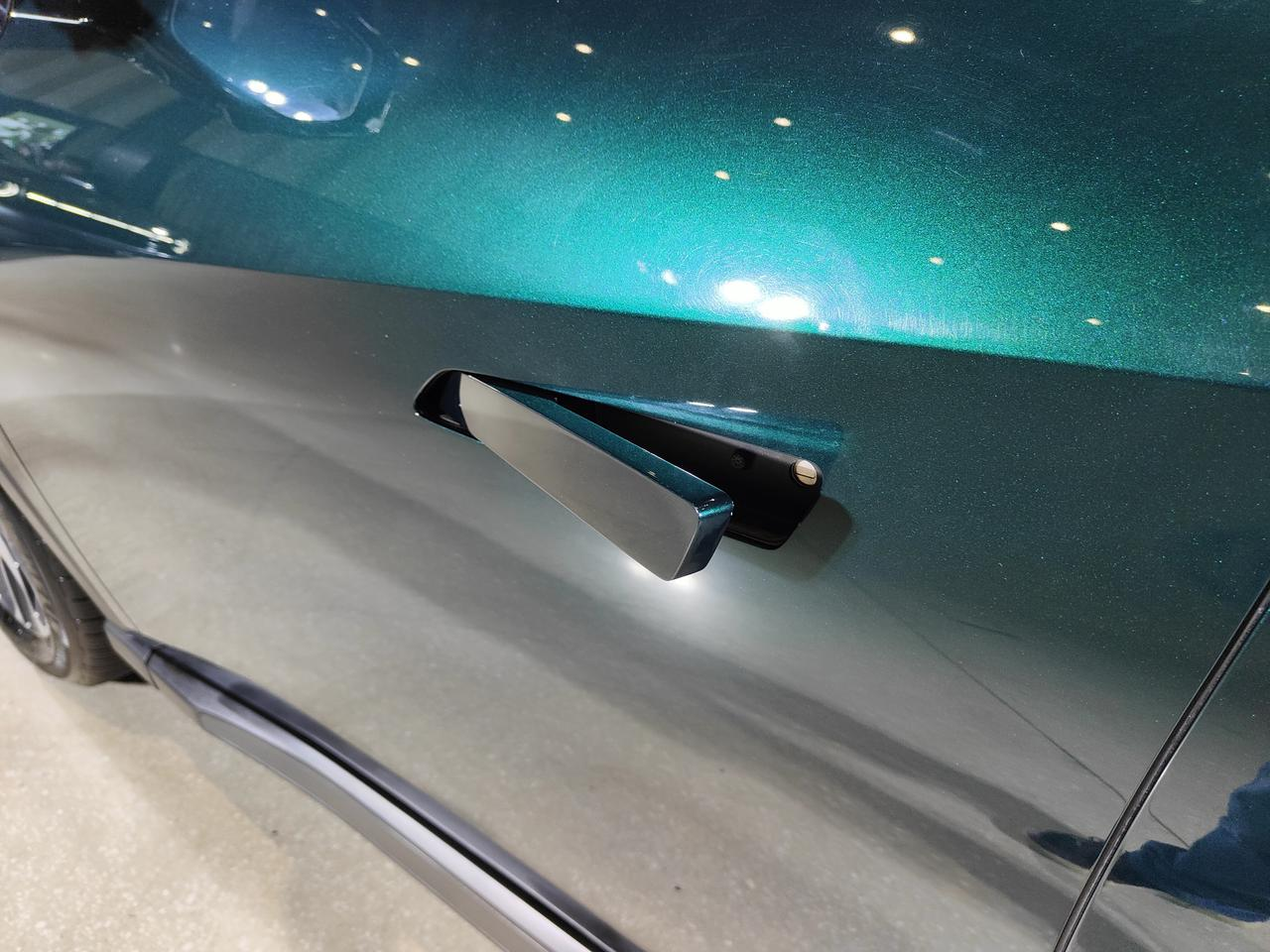
The C-pillar is embedded with dynamic light-up energy indicator, which can dynamically display the battery level during charging and discharging, and the cover plate color can be chosen to be black.
 The car roof comes with a luggage rack and is also available in black. The official statement mentions that the online store will provide fixed accessories for surfboards in the future.
The car roof comes with a luggage rack and is also available in black. The official statement mentions that the online store will provide fixed accessories for surfboards in the future.
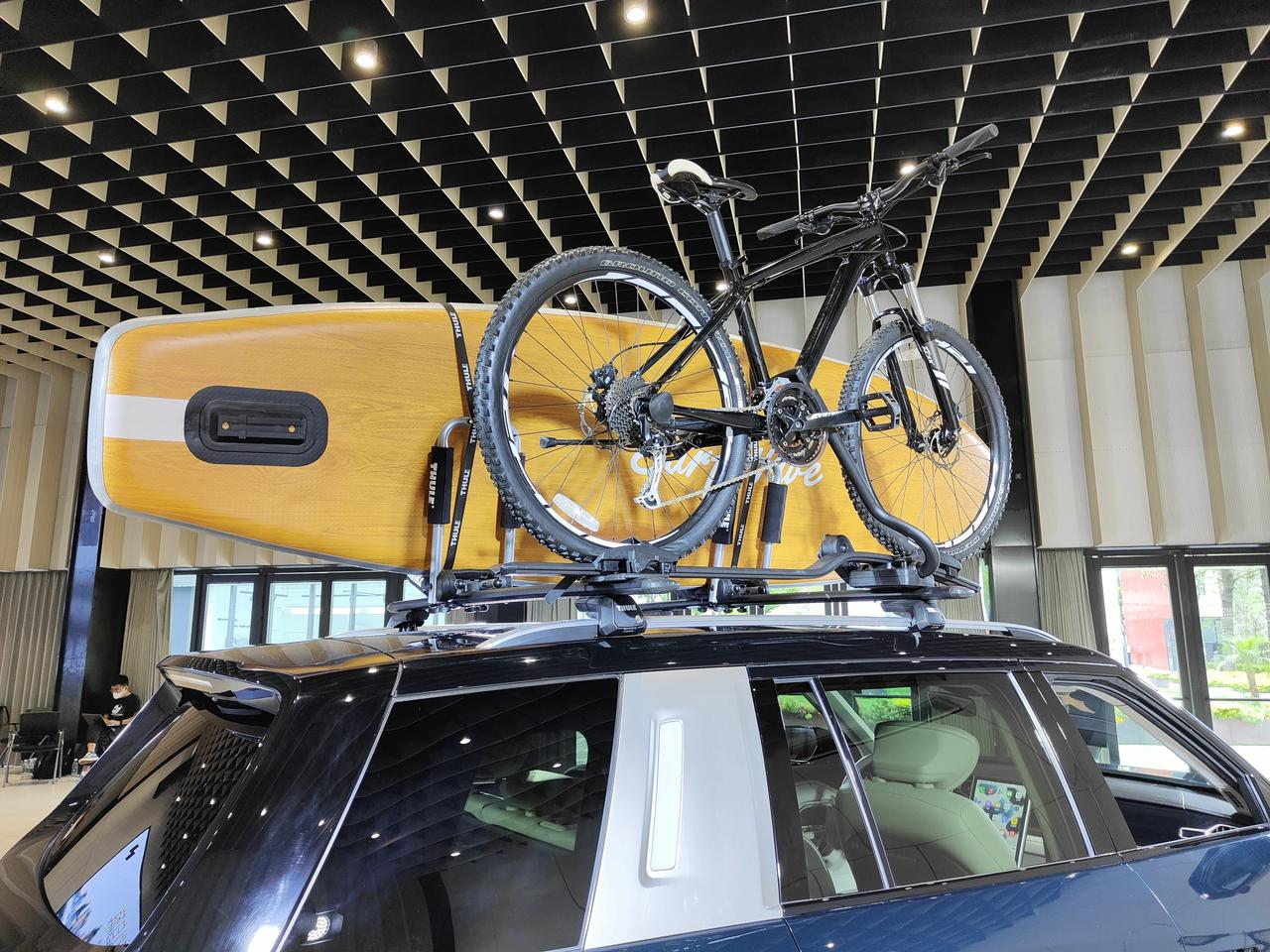
The fast charging and slow charging ports are located in the rear right and can be manually opened. When charging, simply reverse into the garage.
The car supports 3.3 kW external power output and 6 kW emergency charging function, and both charging ports are equipped with plastic protective covers.
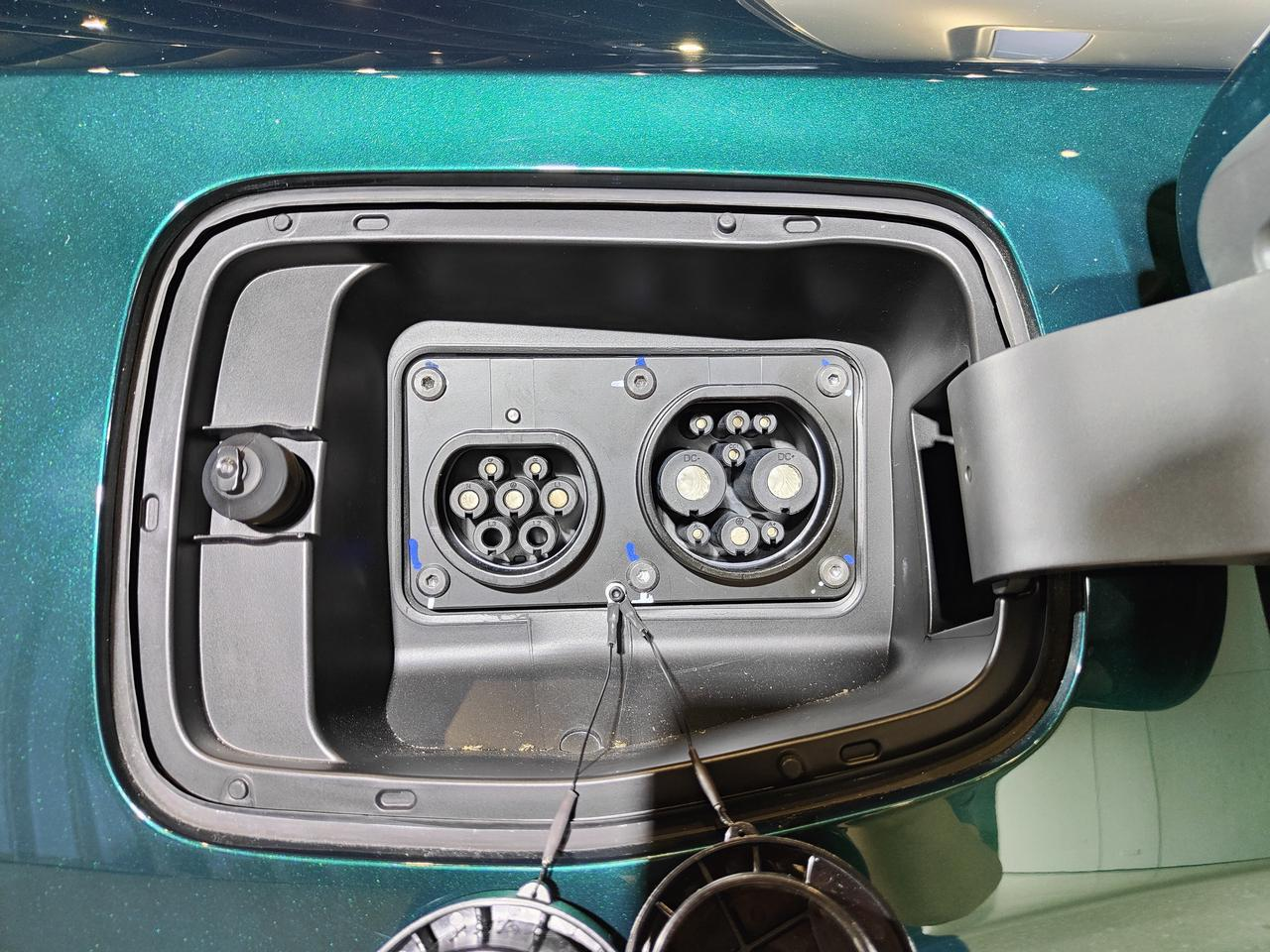
The taillights also use dotted line design, with brake lights and rear wipers in the middle of the tail wing.

The left and right sides use a vertical “cow horn” design, which echoes the front “eyes.”
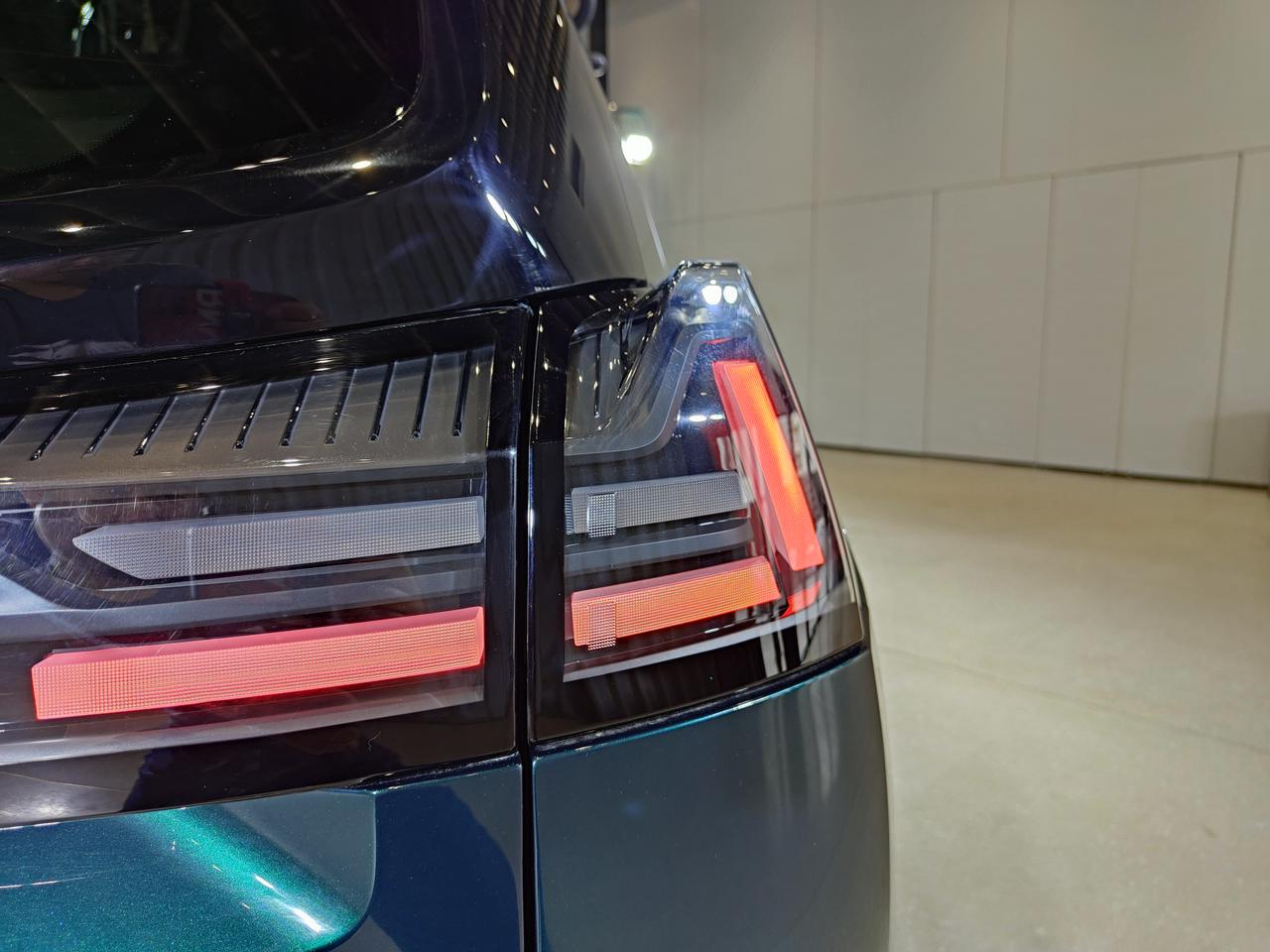
The rear fog lights are placed on both sides of the rear bumper.
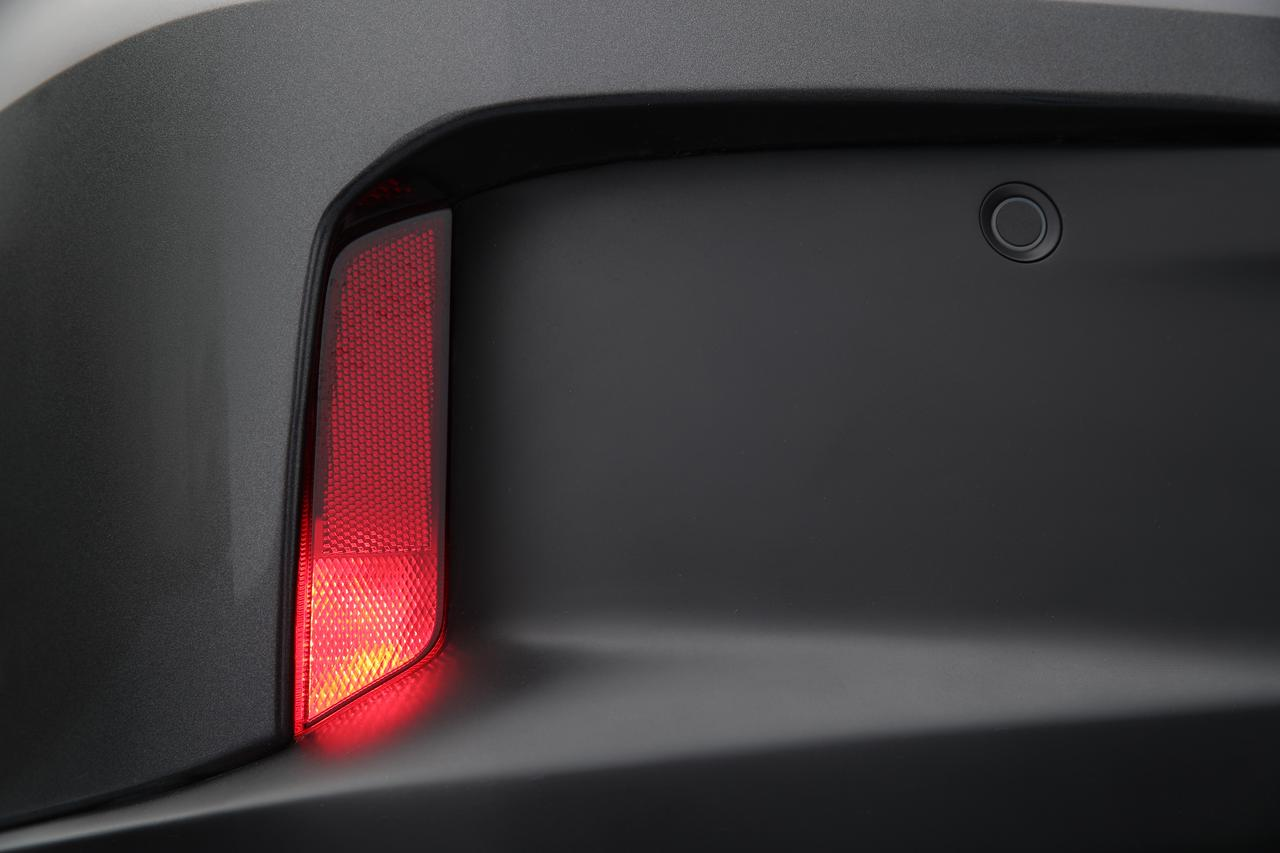
The switch to open the trunk is located to the right of the reversing camera, and the intelligent driving rear-facing camera upgrade position is reserved on the left.

After opening the trunk, the storage space is indeed very large, and it has no problem accommodating the luggage of a family of three on a trip.
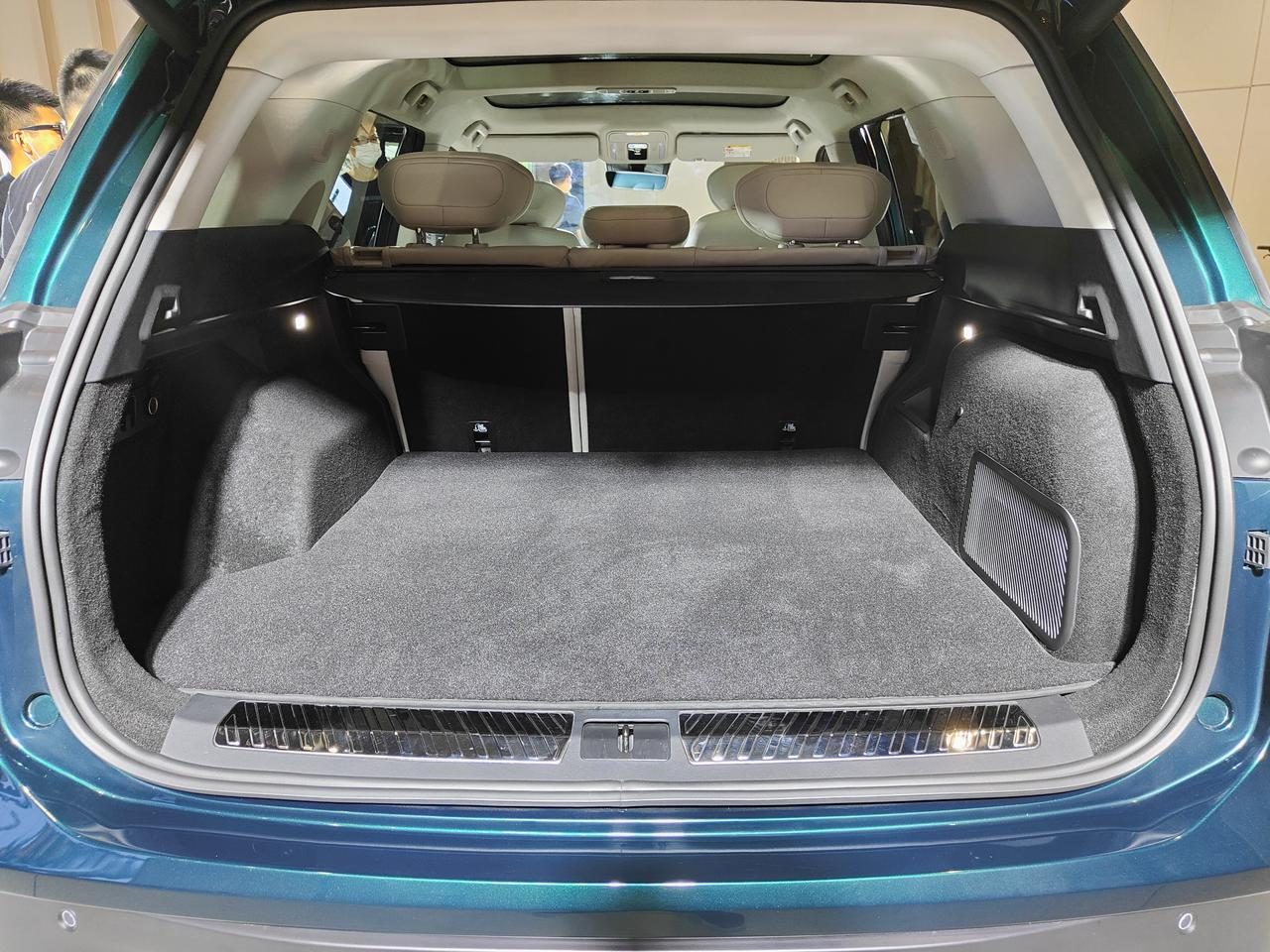
There is a hook on the left side of the trunk, and a 12V external power output interface on the right, which can be used to connect various car electronic devices.
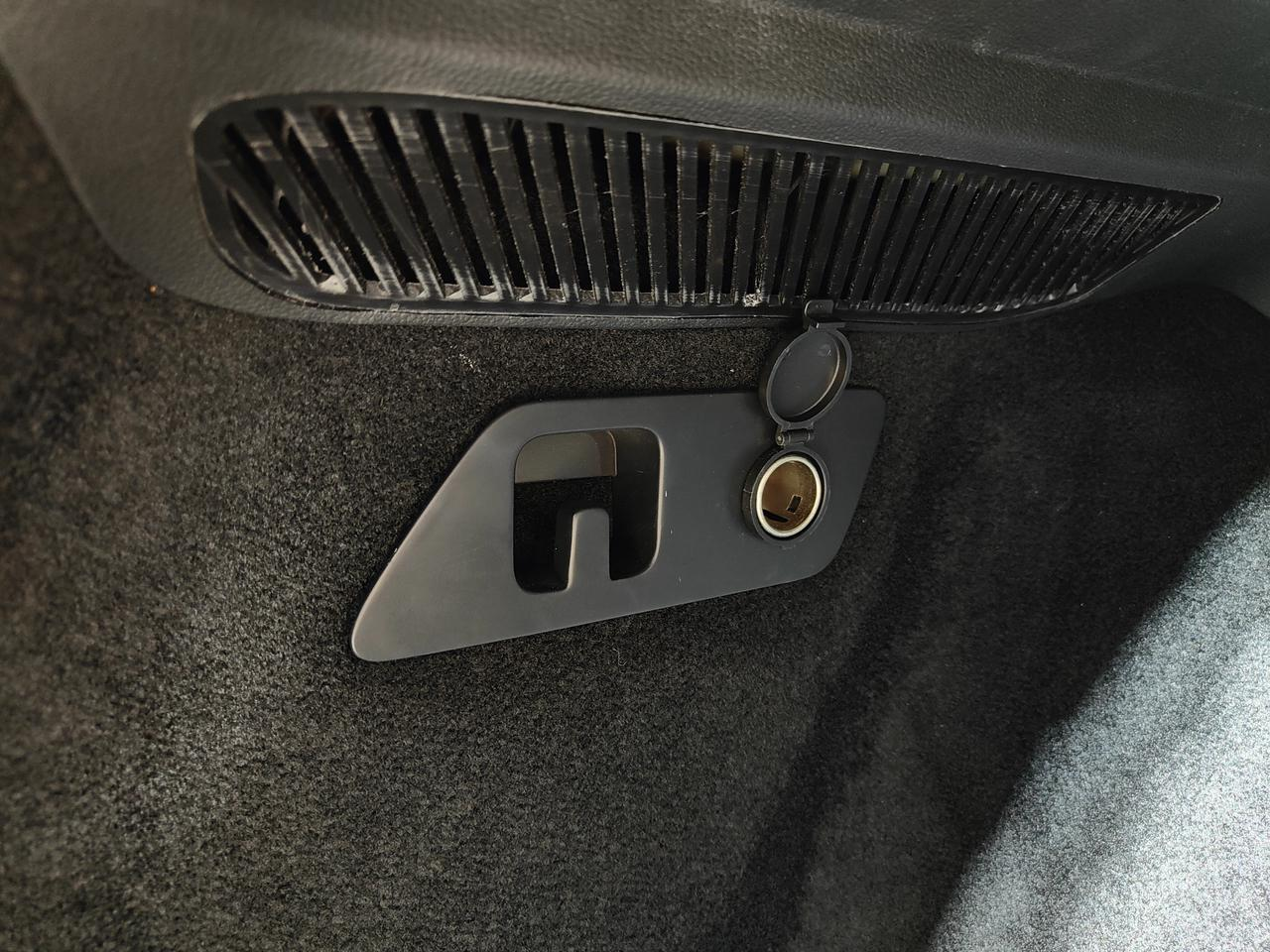 There is a small storage compartment on the right side of the trunk, but I haven’t figured out what to put in it yet. What would you put in there? Tell me your thoughts in the comments below.
There is a small storage compartment on the right side of the trunk, but I haven’t figured out what to put in it yet. What would you put in there? Tell me your thoughts in the comments below.
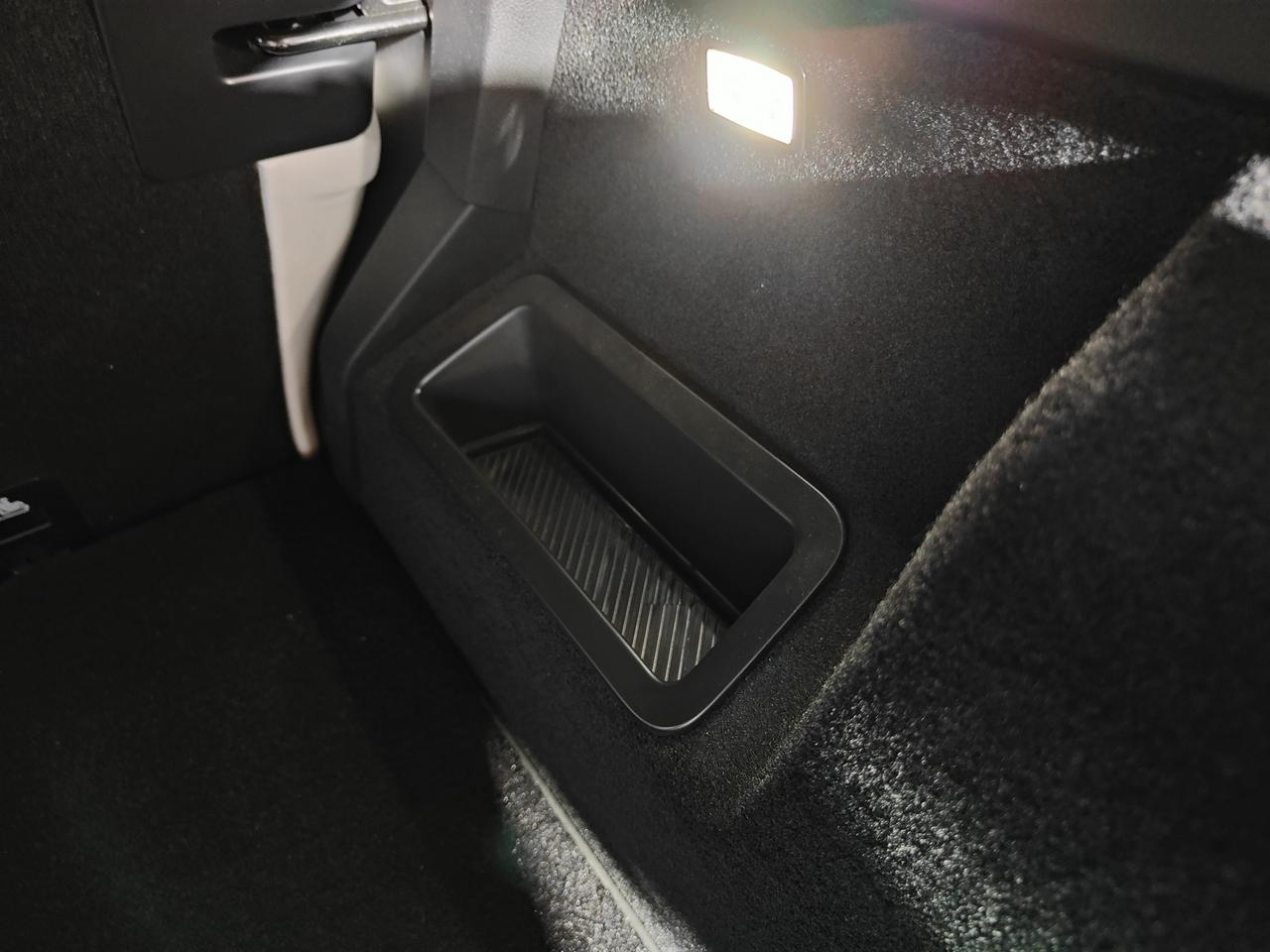
With that, the exterior introduction is complete. Next, let’s take a look at the interior of this “big guy” and see how it really is.
How is the interior? Balancing technology and thoughtful design
As soon as I sat in the driver’s seat, I felt that the seat was very comfortable, with soft cushions and backrests. The seat enveloped me nicely and the cushion was relatively long, providing good support for my thighs while driving.
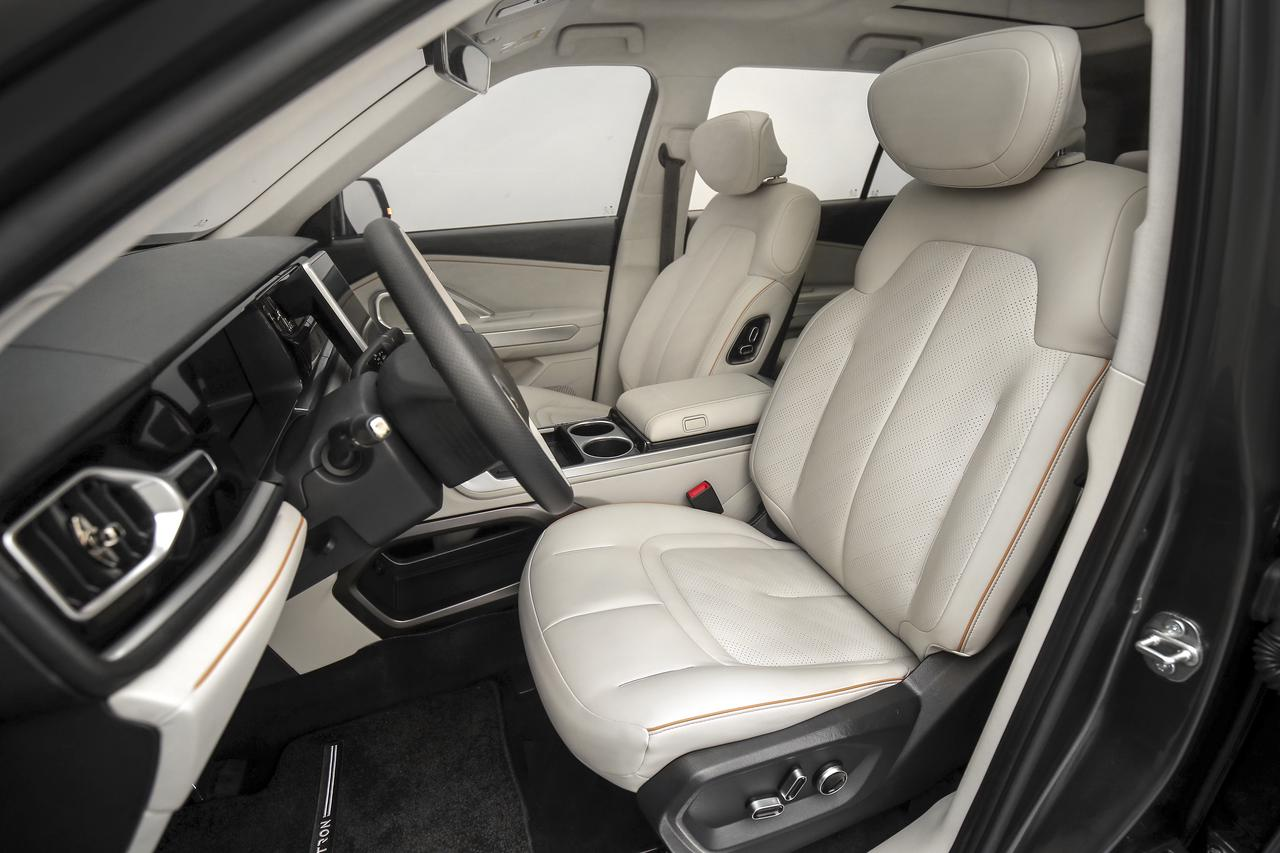
Compared with many other vehicles, the headrest is wider and softer, making it quite comfortable.
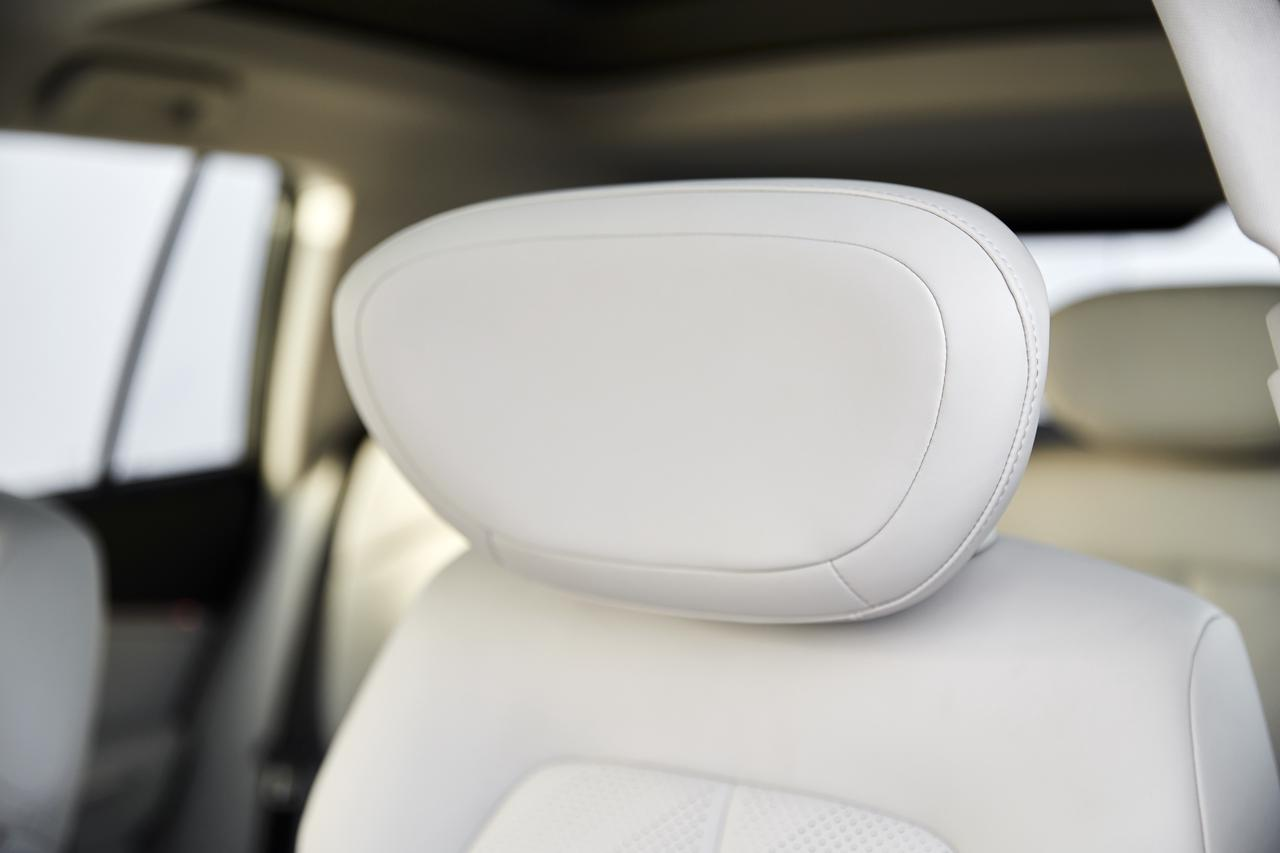
The design of the steering wheel combines XPeng’s two-spoke steering wheel with Tesla’s dual 5-way scroll wheel design, supporting 4-way manual adjustment, with a moderate grip feeling. The left scroll wheel is used for assistance-related adjustments while driving, and the right scroll wheel is used for multimedia-related adjustments. In addition, the steering wheel supports heating function, so you won’t have to worry about freezing your hands when driving in winter.
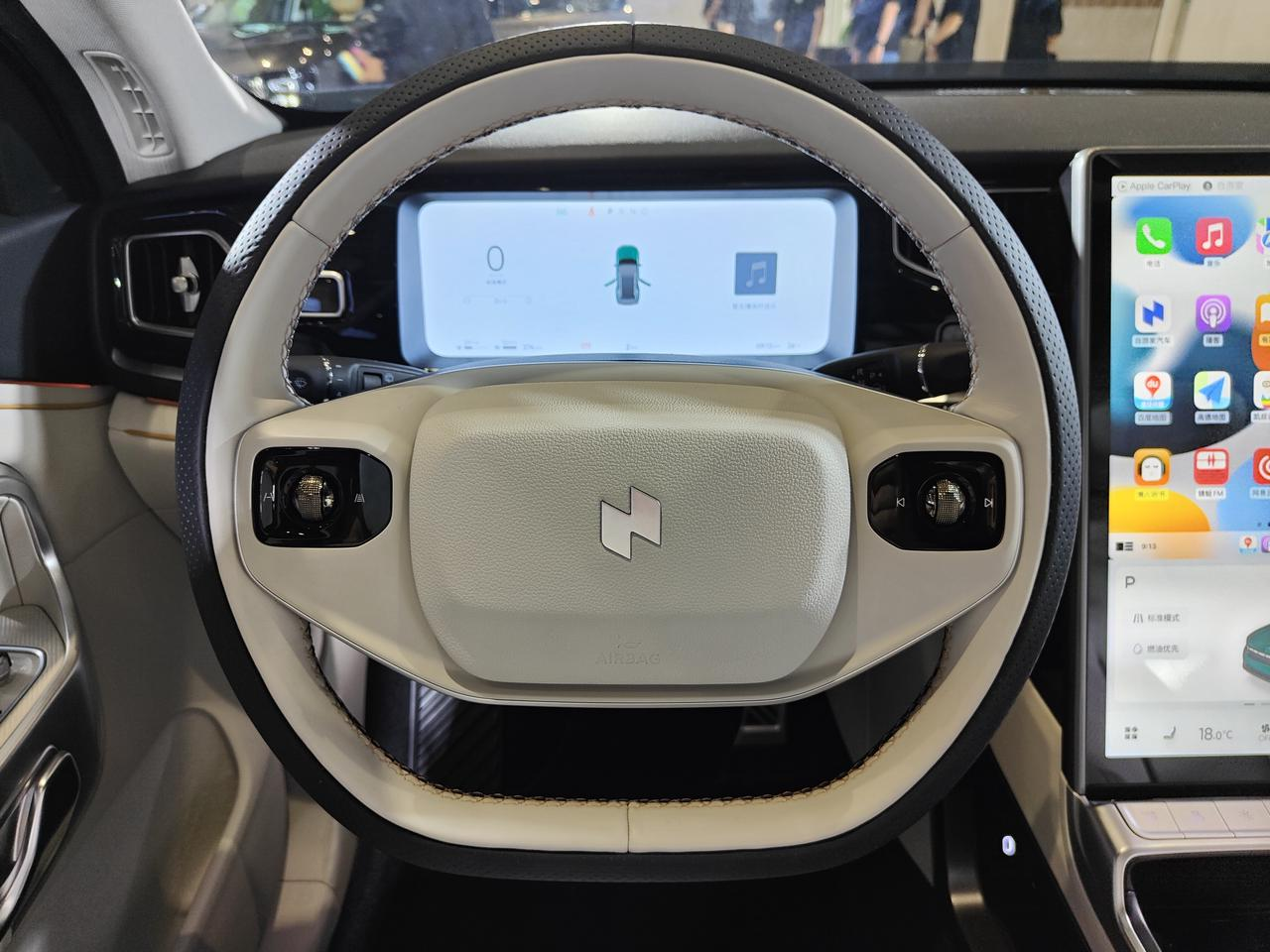
The left lever on the steering wheel is not only used for the turn signal and high and low beam adjustment, but it also integrates with the wiper-related adjustments.
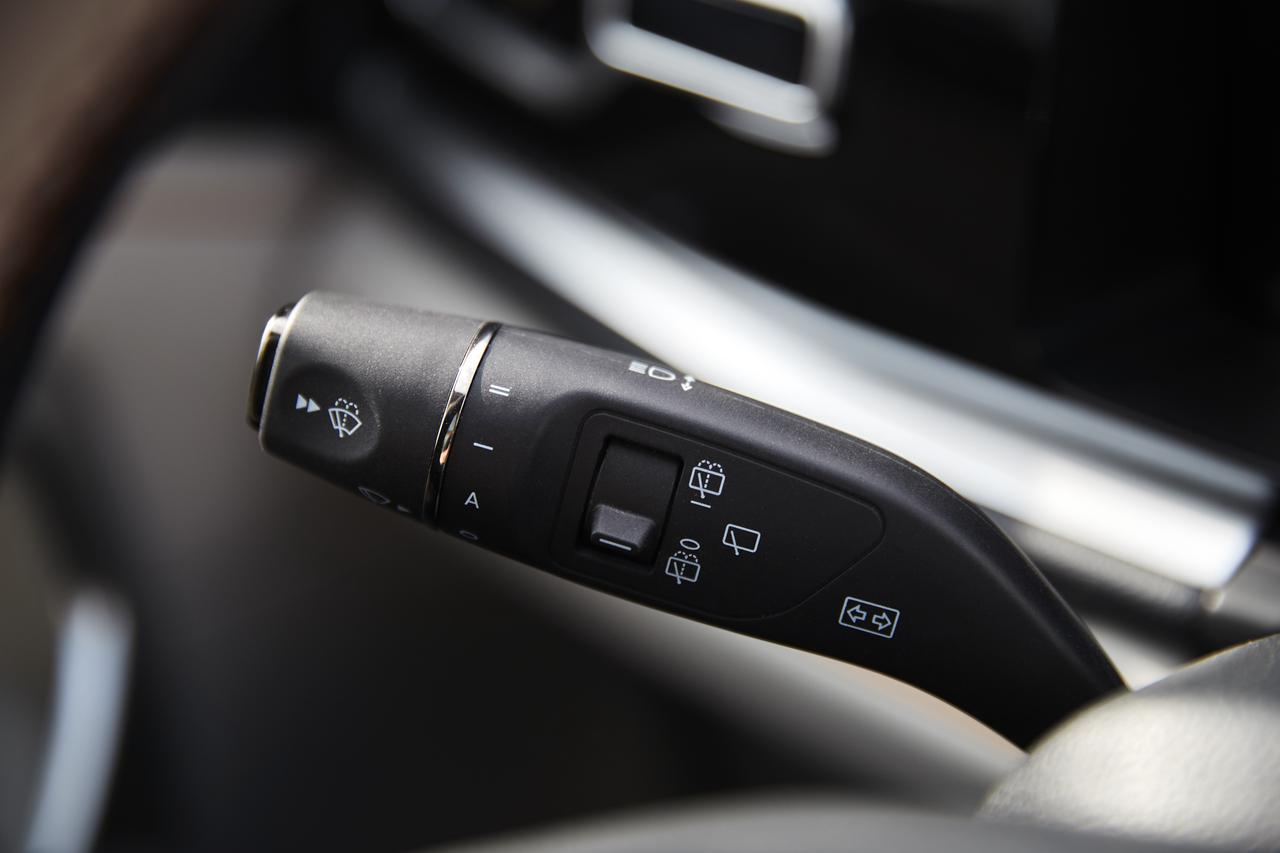
The right lever on the steering wheel is the familiar gear selection design, with two consecutive downward shifts activating the driving assistance function.
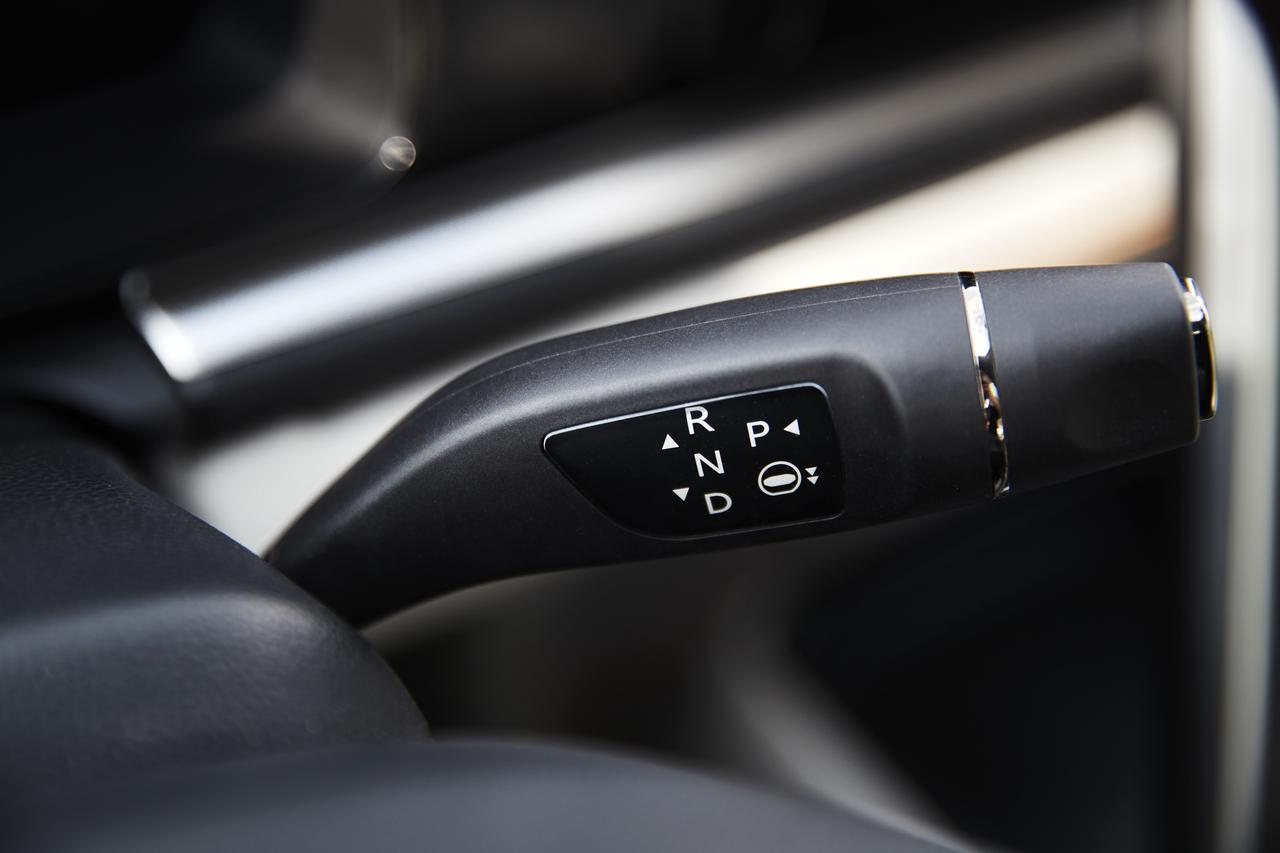
The black and white interior of the door panel buttons creates a striking design, with familiar buttons for adjusting the windows, locking and unlocking the doors, and adjusting the rearview mirror.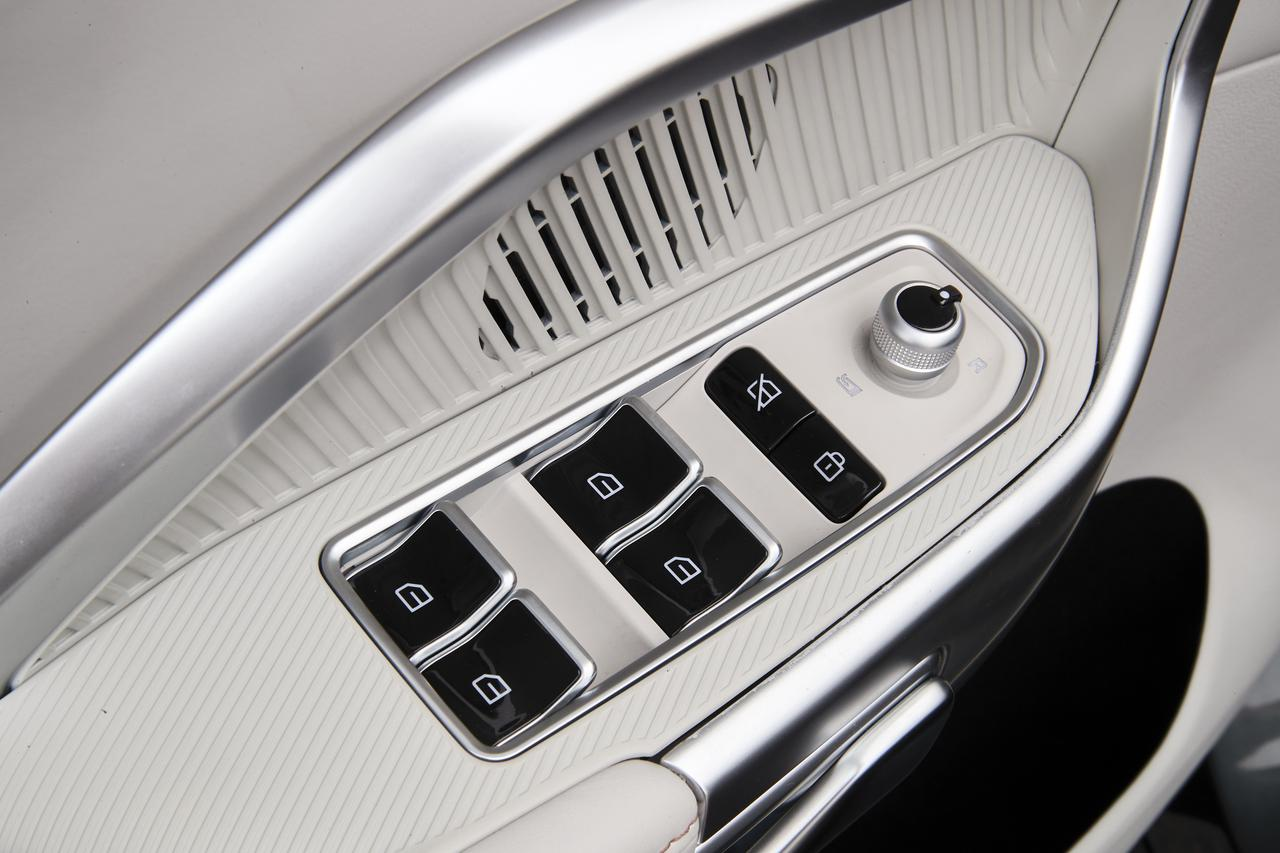
The storage space in the door panel is relatively large. Two bottles of mineral water can be placed horizontally, and at least four bottles can be placed vertically.
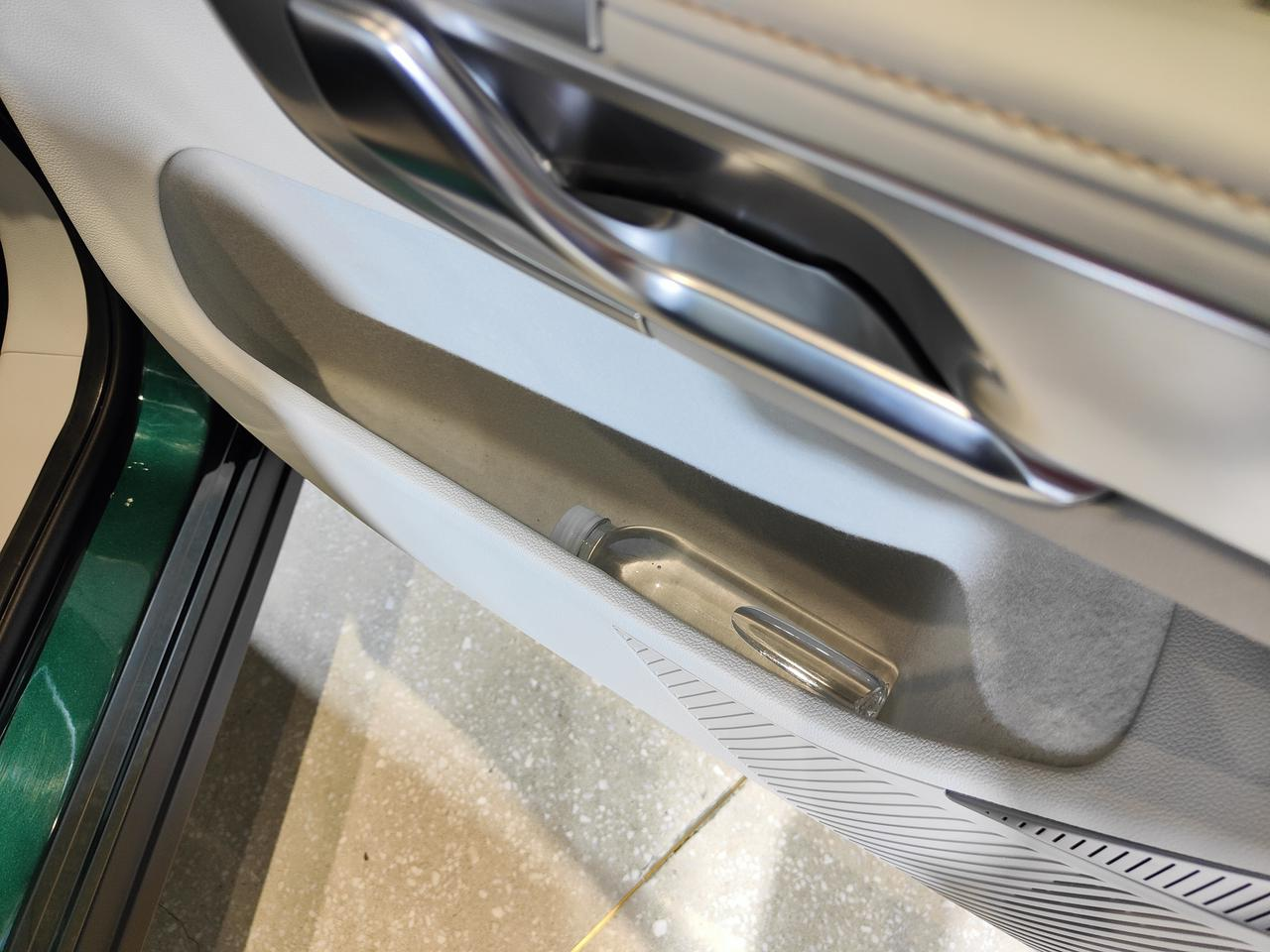
There is an electronic handbrake button and a physical button for adjusting the headlight height on the main driver’s left leg position.
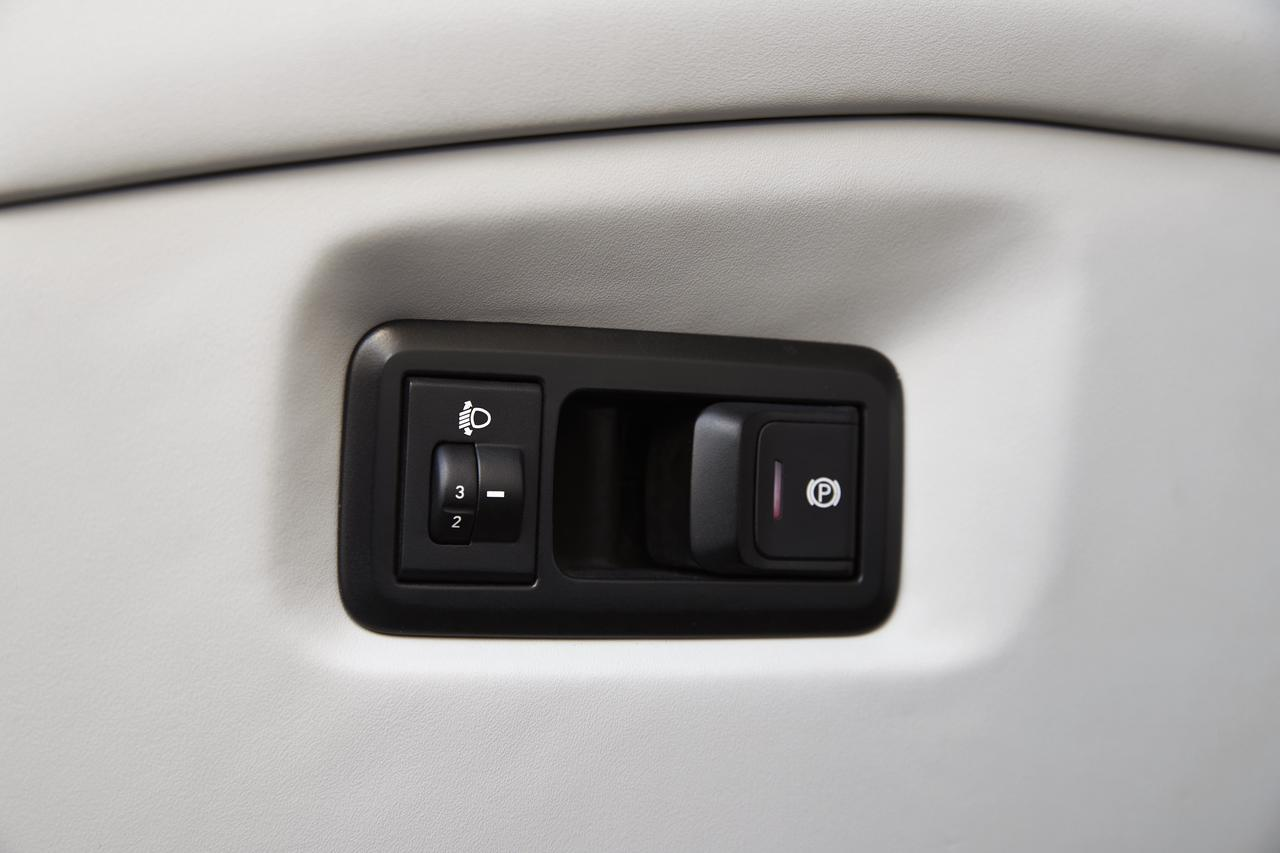
The air conditioning vents in the front row are adjusted by physical means. There are a small LCD screen beside the air conditioning vents on the left and right sides respectively, which can display the current interior temperature, air conditioning wind speed, and PM 2.5 values. This design is the first time I have seen it.
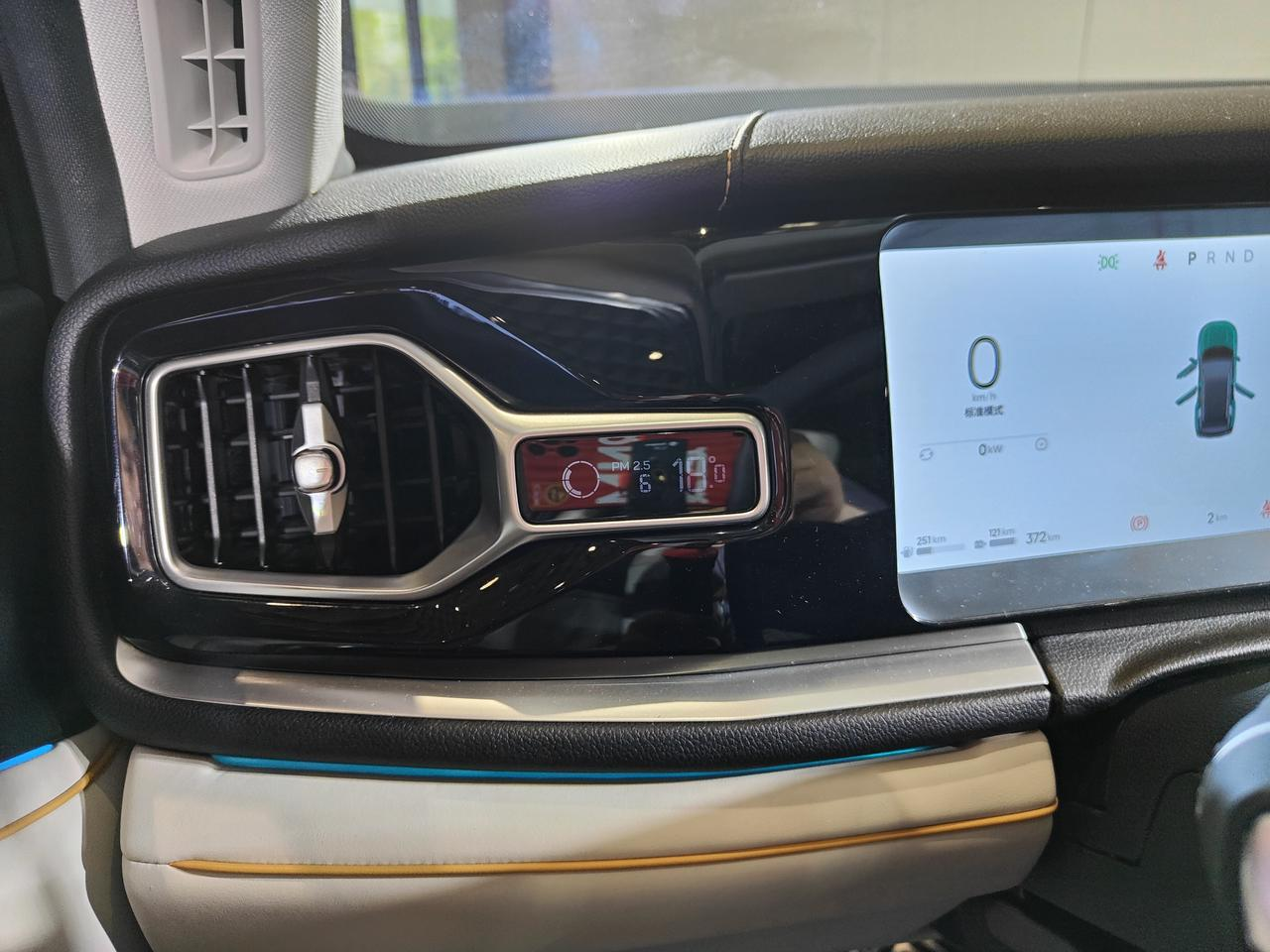
There is a large-sized instrument screen behind the steering wheel. Under the theme of technology, the right side of the screen can be customized to display maps, music, journeys, tire pressure, and acceleration.
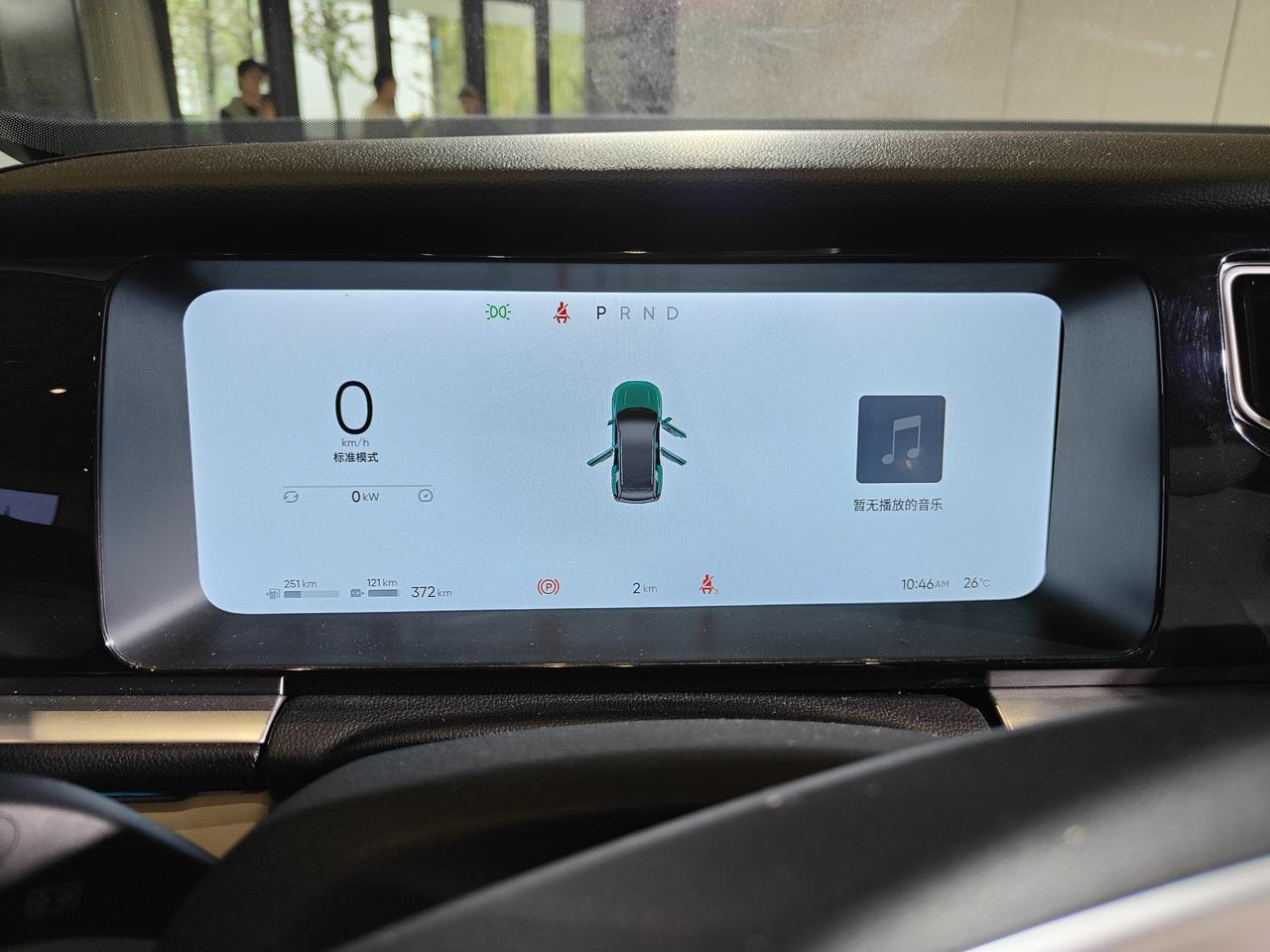
In addition, ZYHOME also prepared a “classic” theme for the instrument screen. Users who like the smell of fuel cars should like this theme.

The central control screen adopts a vertical screen design. Most of the time, I don’t like this kind of vertical screen because it is not conducive to watching videos or playing games in the car. However, there is a reason for the vertical screen of ZYHOME NV. It is its unique feature of running CarPlay and its own car system simultaneously with a split-screen display.
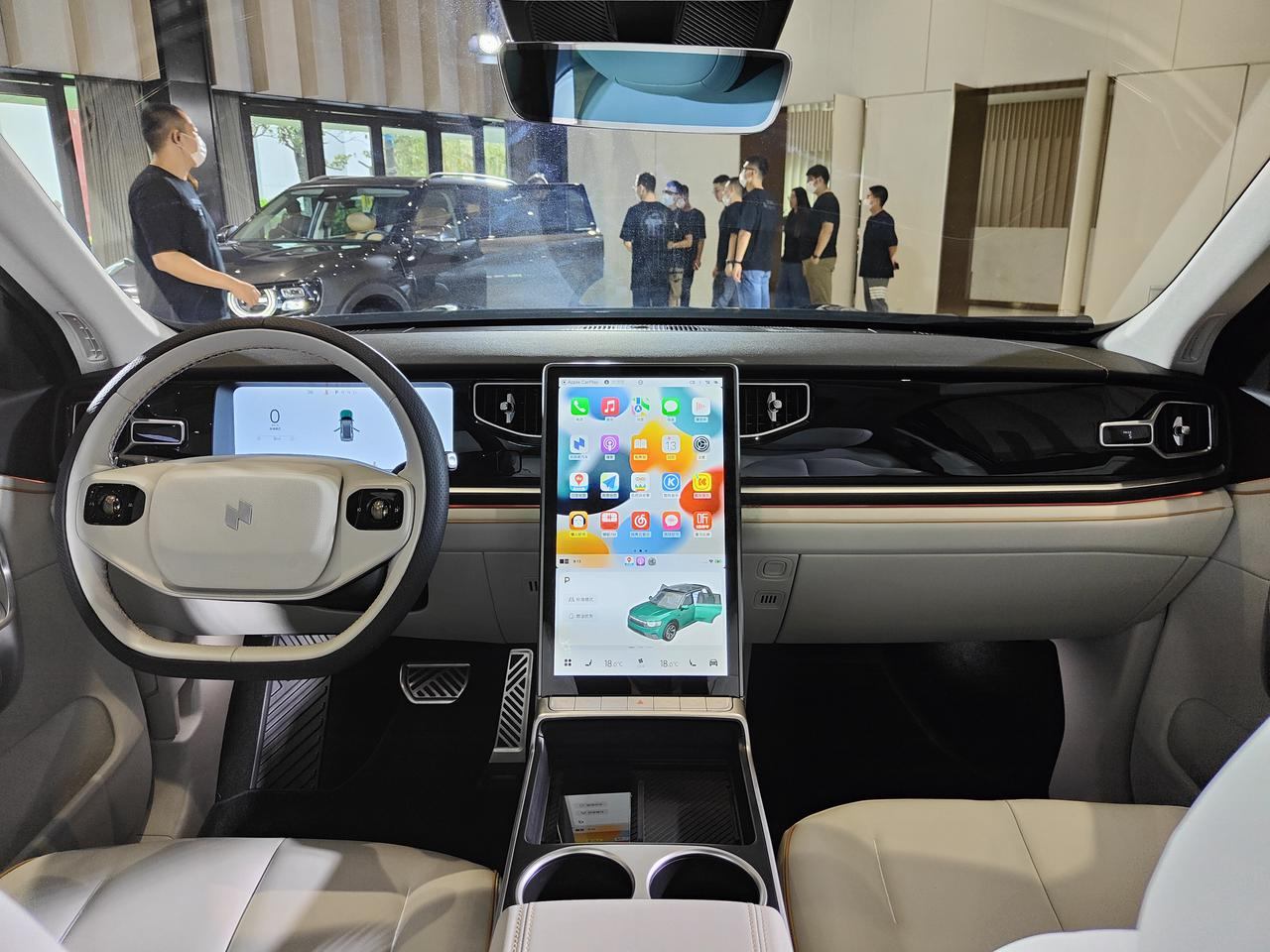 The normal car infotainment system cannot run simultaneously with CarPlay. However, the Zhiyoujia NV splits the screen in half, running CarPlay on the top half and its own infotainment system on the bottom half, without interfering with each other.
The normal car infotainment system cannot run simultaneously with CarPlay. However, the Zhiyoujia NV splits the screen in half, running CarPlay on the top half and its own infotainment system on the bottom half, without interfering with each other.
In practice, if multimedia audio is playing on the CarPlay section, the multimedia playback on the bottom section will automatically pause, and vice versa. Even without CarPlay, the built-in infotainment can still accomplish various conventional functions such as navigation and music playback.
Additionally, the Zhiyoujia NV supports ventilated, heated, and massage functions for the front seats, and also supports ventilation and heating for the rear seats, with a rich variety of seat configurations.
In terms of storage, this car also does a good job. There are two 15W wireless charging pads and two cup holders in the central armrest area.
The depth of the center console is also good, deeper than a bottle of mineral water, about a dozen centimeters.
Under the central area, there is a hollow area where many sundries can be placed. In addition, there are Type-C charging ports and car fast charging ports in this position.
Behind the central control screen, there is a small tray storage area that can be used to place some bills.
The front passenger seat also has a queen-style footrest, but the backrest will recline when the footrest is extended, which is slightly different from other vehicles.
You may have noticed that when the footrest is fully extended, the calf or foot will definitely touch the glove box. Officially, a footrest accessory will be launched later to solve this problem, which can be used after removing the glove box.There is a boss key on the left side of the front passenger seat, which facilitates the rear-right passenger to adjust the front passenger seat.
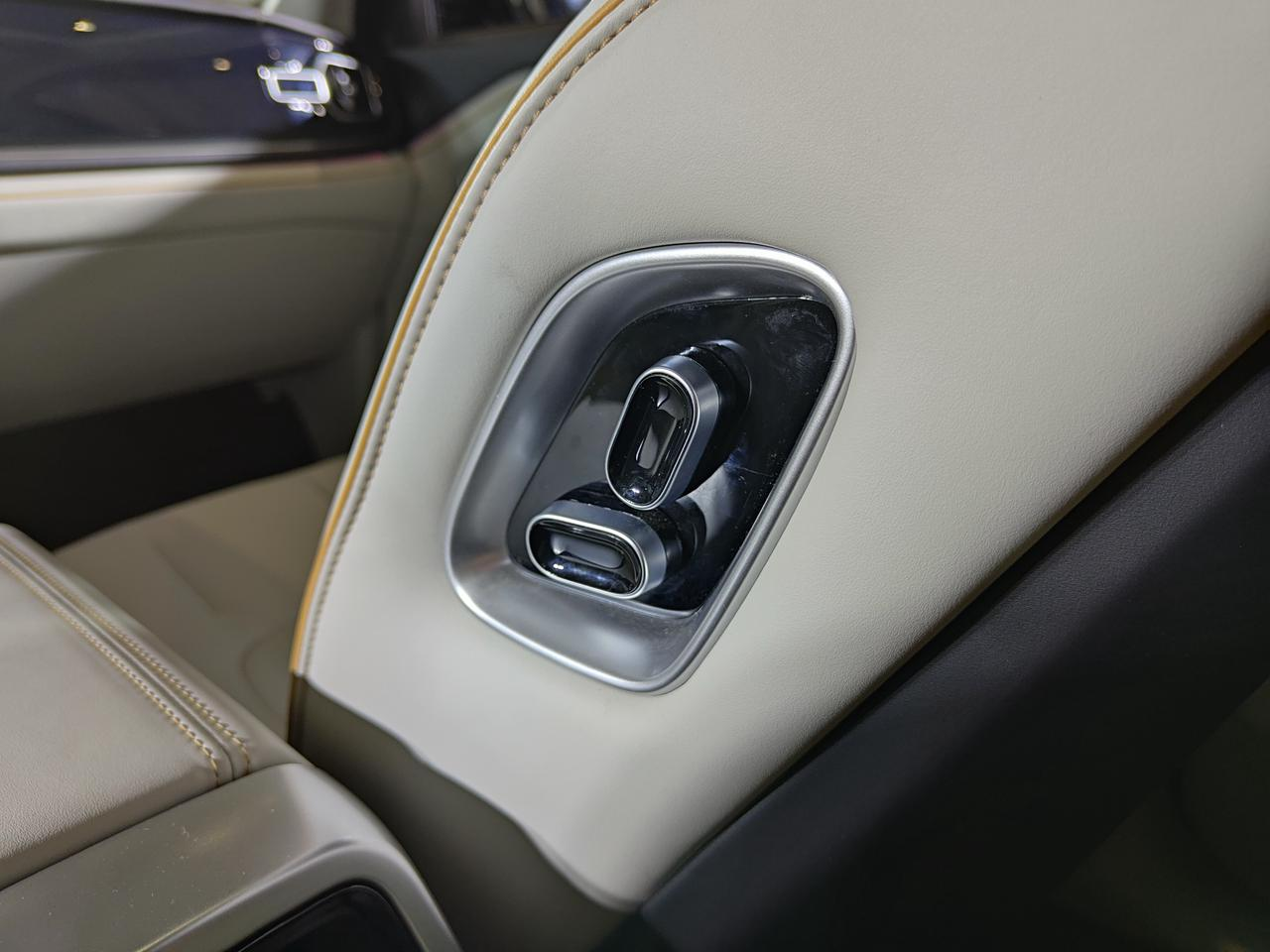
Behind the rear armrest box, there is a display screen that shows the rear air conditioning information, touch buttons for controlling the ventilation and heating of the rear seats, physical adjustment air vents, and two type-C charging ports.
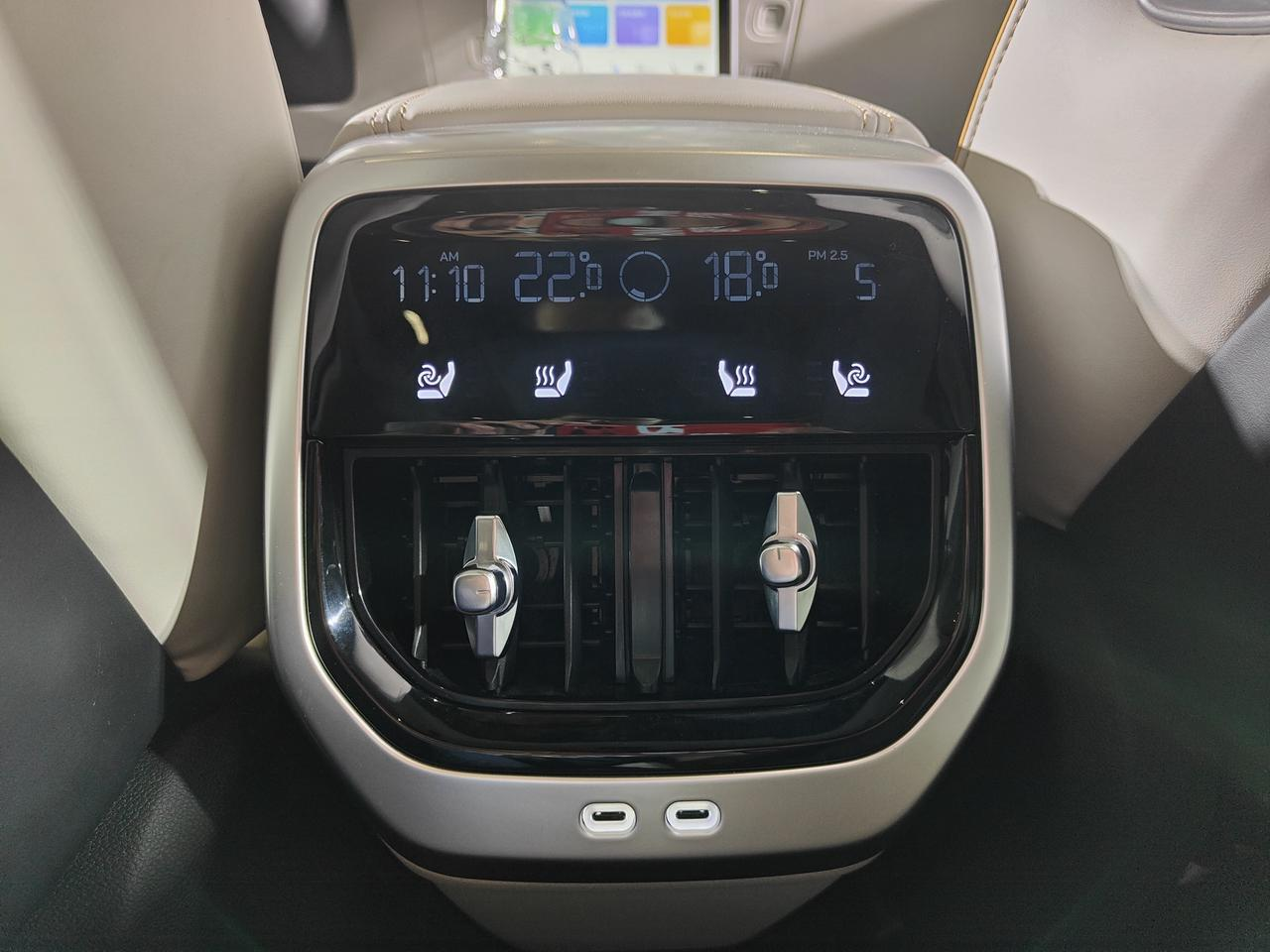
The rear armrest only has two cup holders, which is relatively simple, but the advantage of this design is that there is more padding on the backrest of the middle seat. Compared with the function-rich rear armrest, it is softer and more friendly to passengers sitting in the middle.
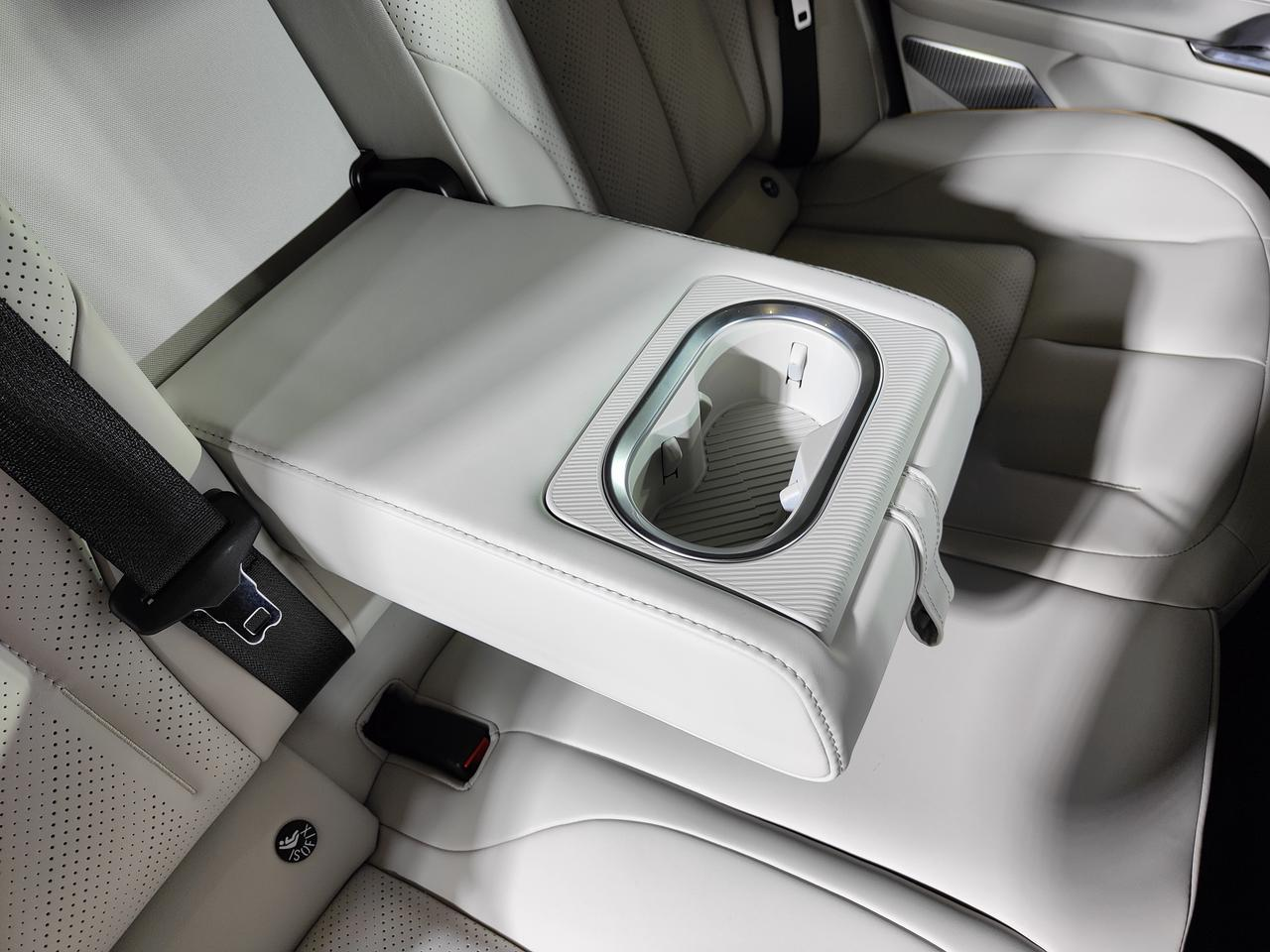
The rear floor is flat, coupled with the good softness of the middle seat, there is no problem sitting three people in the rear.
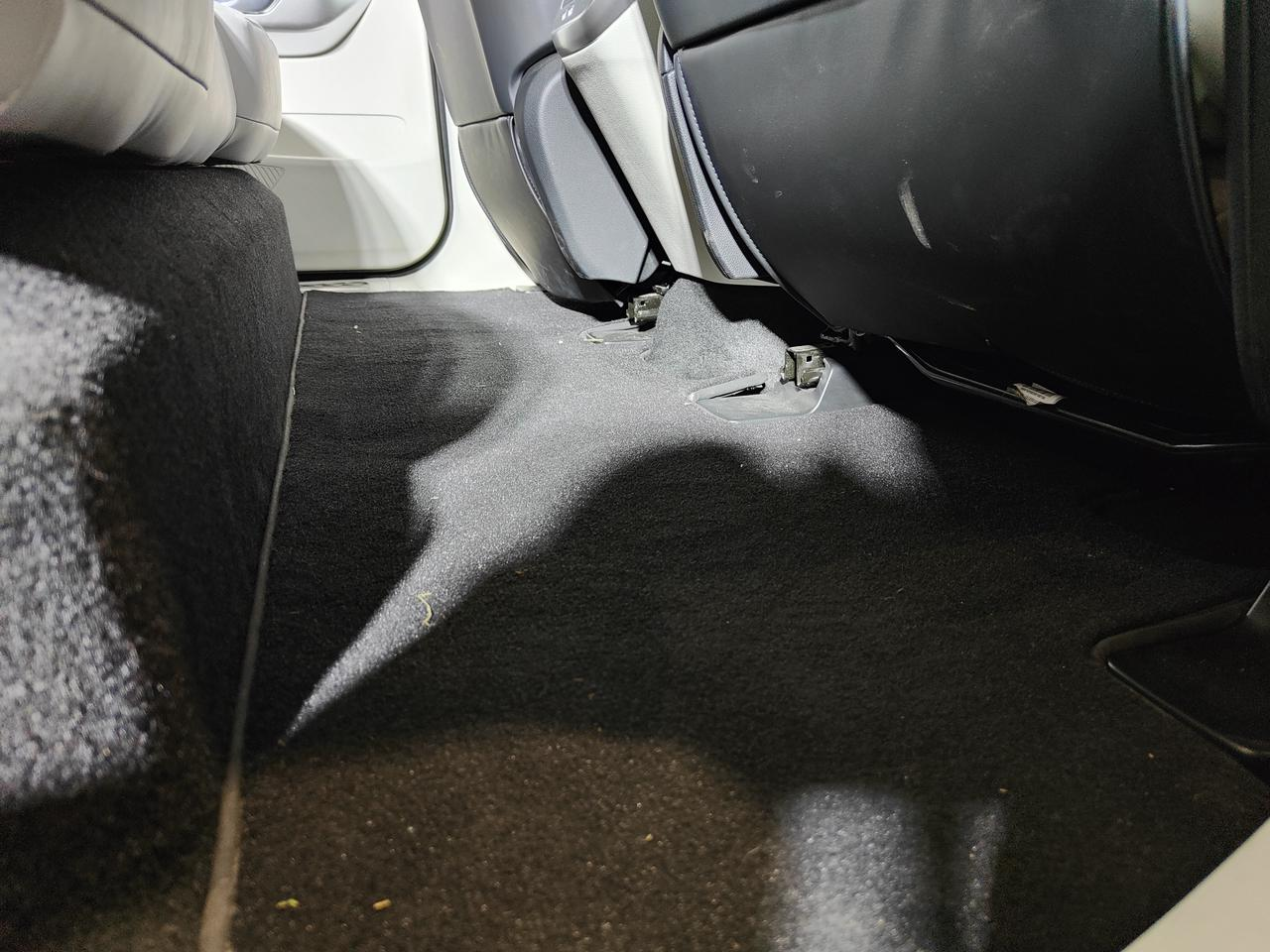
In addition, the vehicle uses front and rear double-layer laminated glass, theoretically with good NVH effect, but due to the static experience, it is currently unable to verify.
At this point, the static experience of the Self Traveler NV is basically over. Simply put, this car does indeed have some bright spots and many places are well done. So, how does it compare to its competitors?
Who are the competitors?
Considering that the Self Traveler NV has two modes of extended range and pure electric, as well as a price range of 278,800 to 318,800 yuan, I chose the Ideal L7 MAX and the LanTu Free as its competitors for comparison.
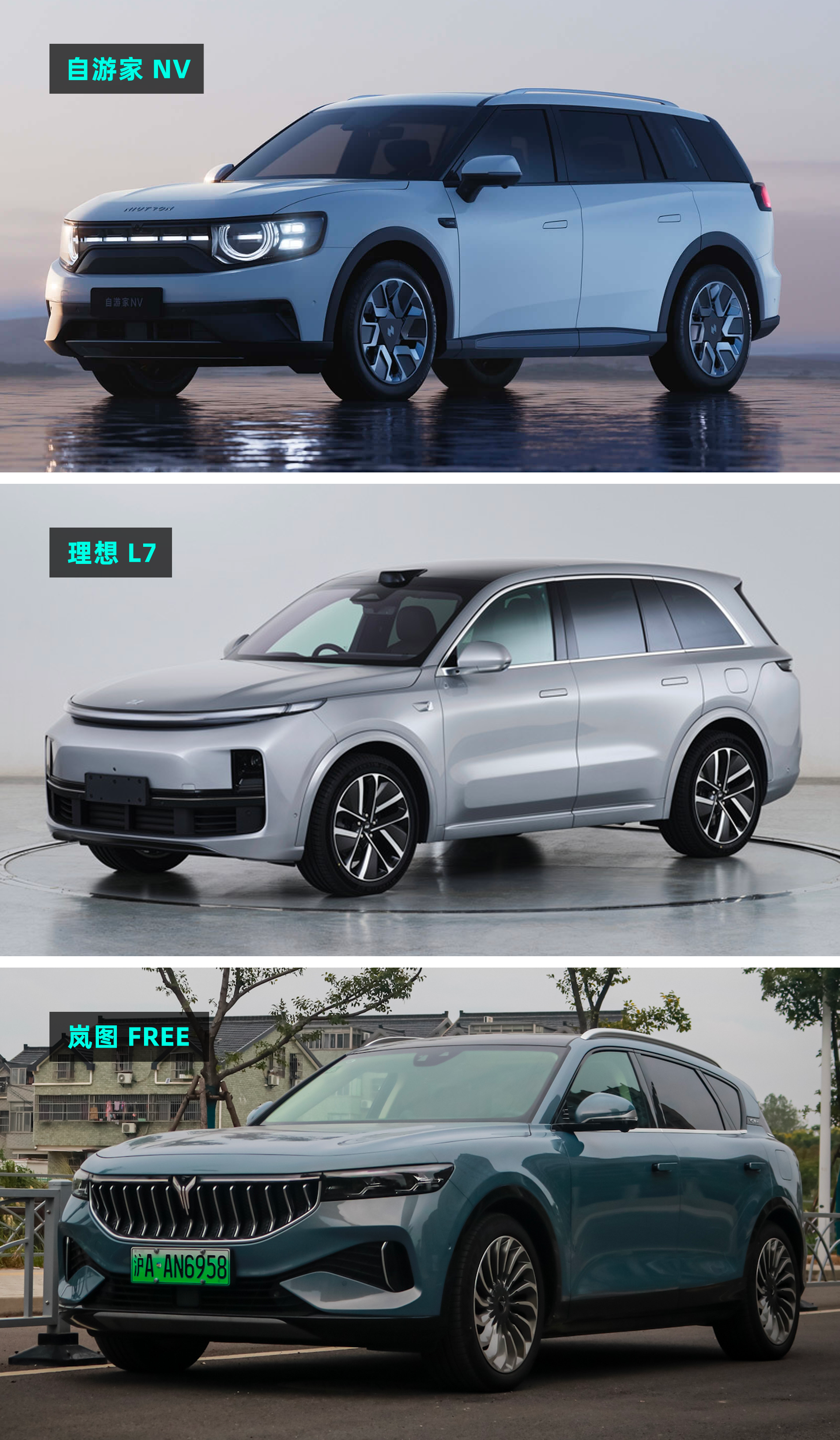
I have organized the pictures of the exterior and interior design of the three cars. Which car’s exterior and interior do you like the most?

In terms of endurance, considering that Ideal only has an extended range model, only the extended range versions from each company are compared.
Because the range parameters provided by each official website are different, let me explain these parameters. The comprehensive range of XYC nv is shorter than that of LY L7, but better than that of Voyah FREE. However, in terms of pure electric endurance, it is indeed slightly inferior to the other two models.
Although XYC nv still ranks last in terms of power, the 5.9-second 0-100km/h acceleration is still relatively strong in the same class of vehicles. In addition, compared with LI, the ability to refuel with 92 octane gasoline is also a major advantage of XYC nv.
In terms of seat configuration, LI, the one mainly targeting families, is undoubtedly the most luxurious. However, XYC nv is not inferior, especially its rear seat configuration is much more abundant than Voyah FREE.
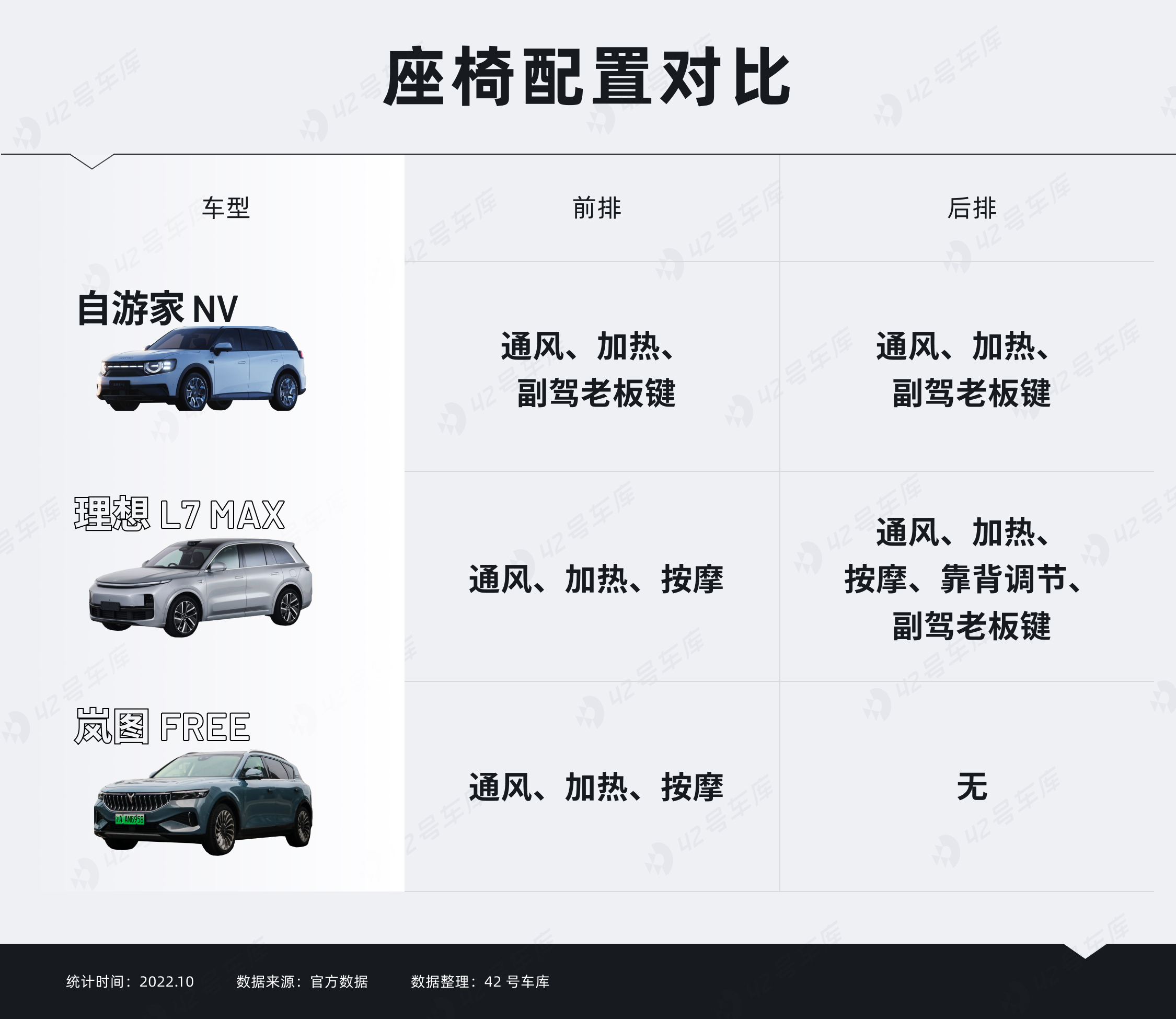
Overall, compared with the range-extender models of other brands, XYC nv still shows good competitiveness.
Final Thoughts
When I heard that Li Yinan, the boss of NIU electric scooter, was also planning to build a four-wheeled new energy vehicle, I was a little skeptical. After all, in my understanding, the difference between making a two-wheeled electric scooter and a four-wheeled electric car is not trivial.
The highlight of this car is undoubtedly the range extender and pure electric twin-platform models, which are prepared for different groups of people. Those who have range anxiety about electric cars can choose the range extender model, while those who have charging conditions and do not want to refuel can choose the pure electric model.
All models are equipped with four-wheel drive, a 50:50 weight distribution between the front and rear axles, a minimum ground clearance of 200 mm, a tire outer diameter of 788 mm, and water wading depth of 470 mm, plus an off-road driving mode, making it easy to handle some mild off-road conditions.
The split-screen use of CarPlay and the built-in system is also a highlight, after all, in the era of fuel cars, many people still prefer to use CarPlay, whose rich applications can allow the built-in system to only need to support commonly used functions in the short term, reducing software development costs.
The display screen near the air outlet of the air conditioner makes it easy for passengers to check the air temperature and air quality in the car at any time.
Although the seat configuration is not as good as LI, it still achieves the goal of “taking care of every passenger in each seat”.
The starting price of 278,800 yuan is undoubtedly a more competitive price compared to its rivals.
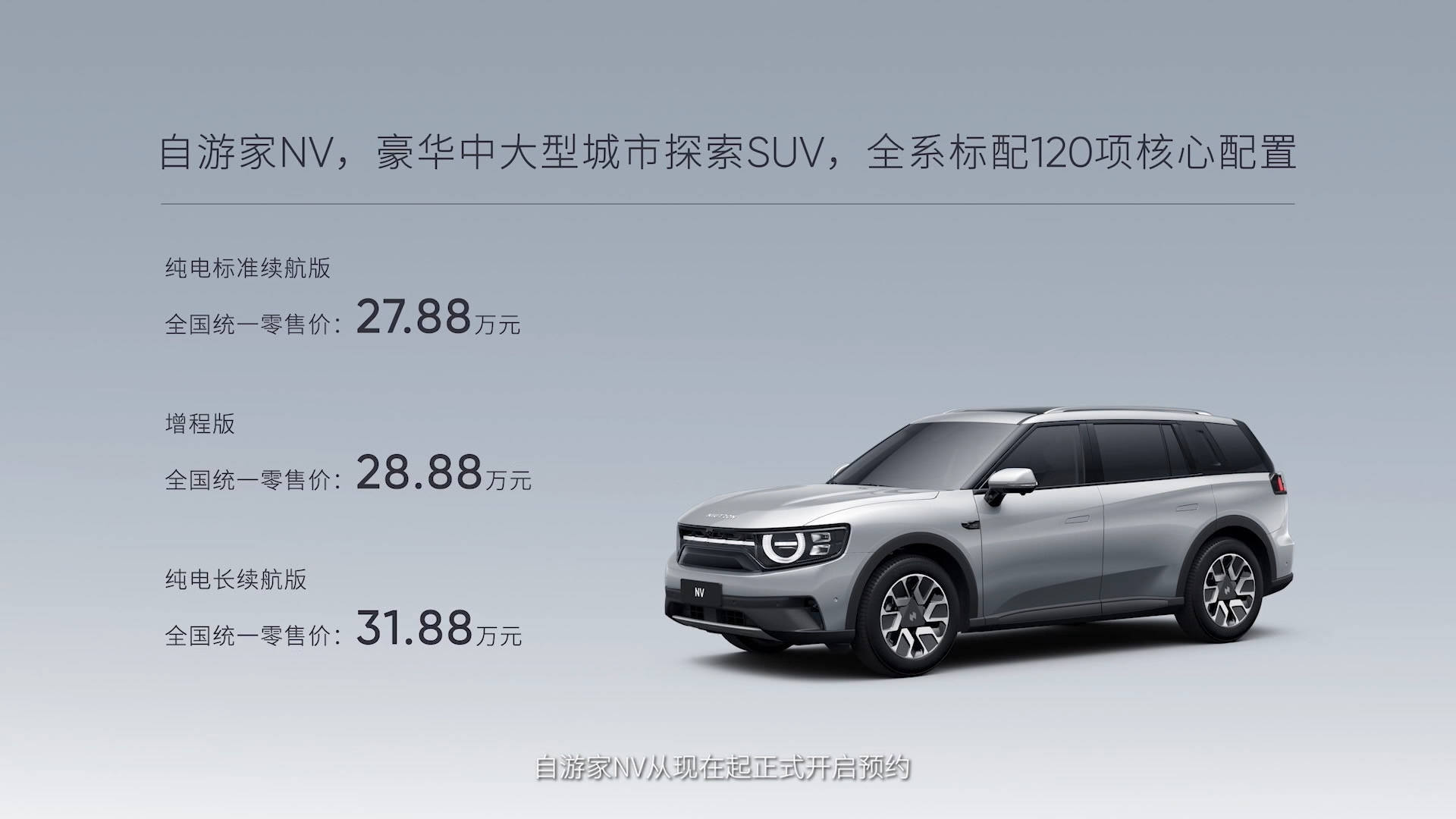
What do you think of XYC nv? Can it make you a member of “the group of XYC nv owners”?
This article is a translation by ChatGPT of a Chinese report from 42HOW. If you have any questions about it, please email bd@42how.com.
